INTERNATIONAL VETERINARY SIMULATION IN TEACHING (INVEST)
Wednesday 28 August - Friday 30 August 2024
University of Surrey, Vet School Main Building




Wednesday 28 August - Friday 30 August 2024
University of Surrey, Vet School Main Building




Dear esteemed guests,
I am delighted to welcome you to the 8th InVeST Conference, hosted for the first time in the UK, at the University of Surrey's School of Veterinary Medicine. As the Head of School, it gives me great pleasure to open this event.
Our school has always been committed to providing a world-class education, and hosting this conference is a testament to that commitment as we explore the use and development of models and simulations in veterinary education. It is a wonderful opportunity for our academics, technicians and students to network and collaborate with like-minded individuals, with the aim of enhancing our students’ performance of clinical skills.
I want to express my gratitude to the distinguished representatives from various organisations who have taken the time to be here for this conference. By sharing your research and novel teaching techniques, we all have the chance to enhance our teaching and provide a greater educational experience for our students.
I encourage you to make the most of this event. Engage with our guests, ask questions and seize the opportunity to network and explore potential collaborations. The knowledge and connections you acquire today will undoubtedly contribute to your success in the future.
I wish you all a productive and enlightening InVeST 2024 at the School of Veterinary Medicine. May it be the starting point for many bright and fulfilling professional journeys. Thank you for being a part of this important event and let us all work together to educate the next generation of veterinary professionals.
Lastly, I would like to thank the organising committee for putting together a stellar programme for the InVeST 2024 conference.
Warm regards,
Professor Kamalan Jeevaratnam Head of School School of Veterinary Medicine University
of Surrey

Welcome to InVeST 2024 at the University of Surrey. It is hard to believe that this will be our 8th InVeST meeting. It is nice to be back on a more regular schedule. It has been so fun for me to see how this group of likeminded educators has grown over the years and the eight times we have been together over the past 13 years. I’m so glad that we were able to get people together in 2011 for our first ‘think tank’ and that I have been able to be part of this group and to watch it grow and mature.
As perceptions with respect to veterinary training have changed over the last 13 years, this group has often been at the forefront of new techniques and ideas for veterinary education. The number of skills labs and companies that support simulation continues to grow. The college administrations are acknowledging the importance of simulation in veterinary training and are making more investments in these areas, both in personnel and in facilities.
The group of educators that make up InVeST continue to push the envelope in educational training. I firmly believe that we continue to provide a better and better educational outcome for our students and a platform for our educators. It is indeed a wonderful time to be part of veterinary education worldwide.
I am really looking forward to seeing my friends from past meetings and making new friends at Surrey. I hope you are all looking forward to it as well. I’m confident that InVeST 2024 will be a great meeting and a wonderful opportunity for us all to reconnect and chart a path forward.
See you all soon.
Dean Hendrickson Chair, InVeST Advisory Board
Our heartfelt thanks to our InVeST 2024 sponsors:
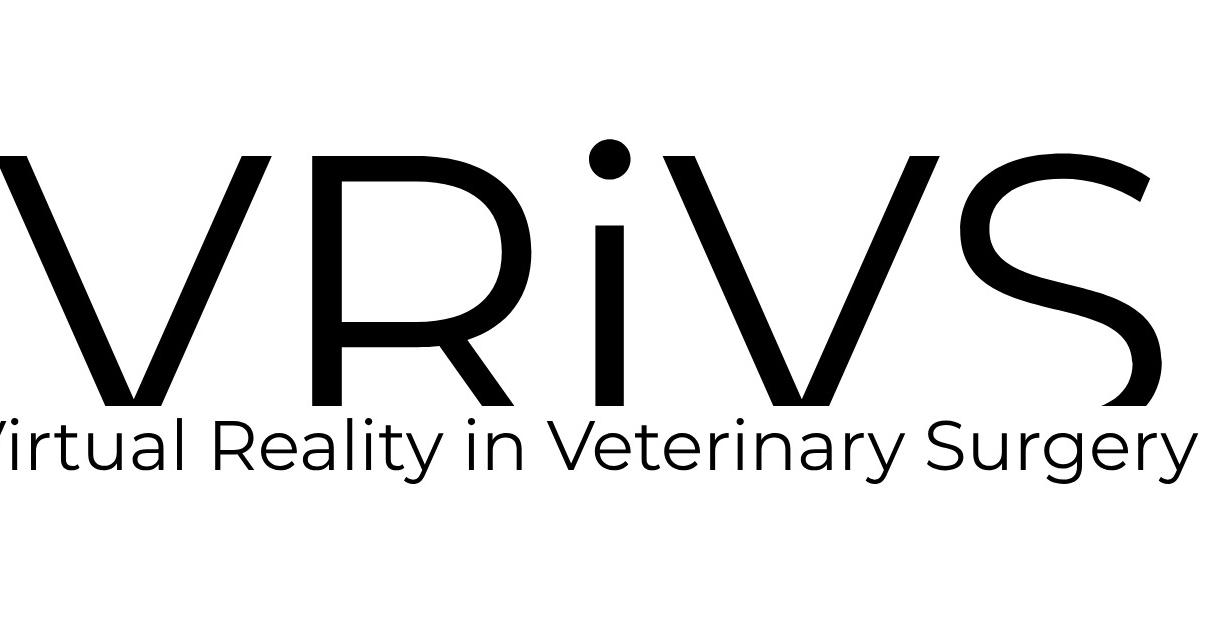
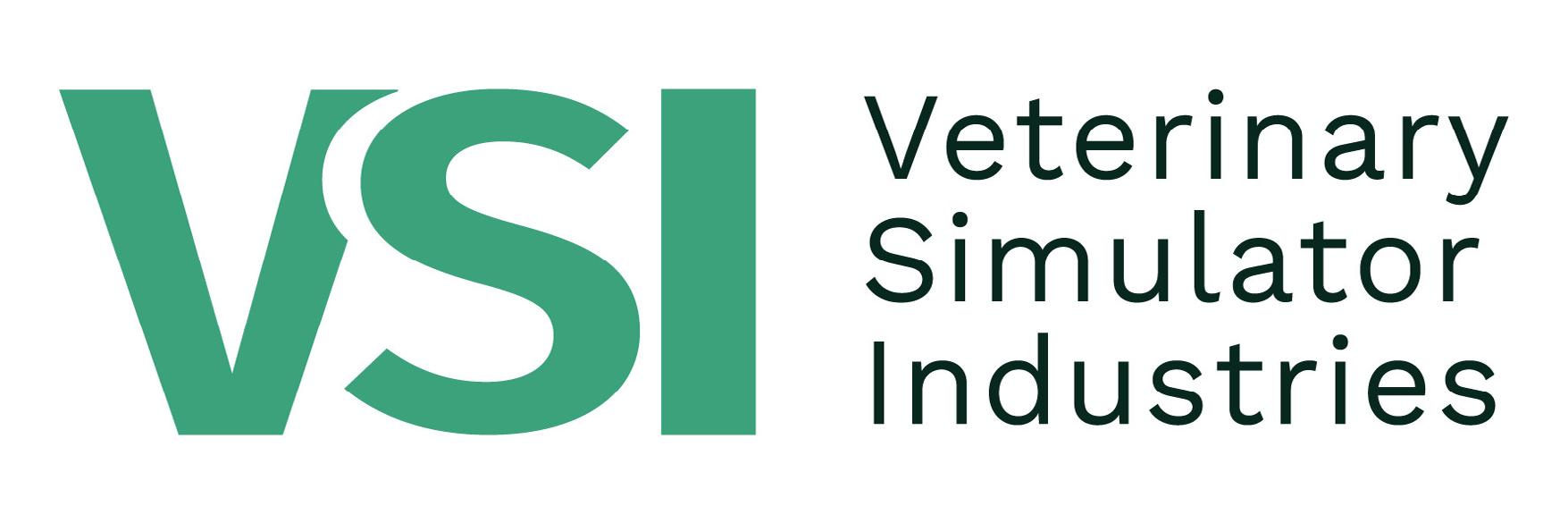


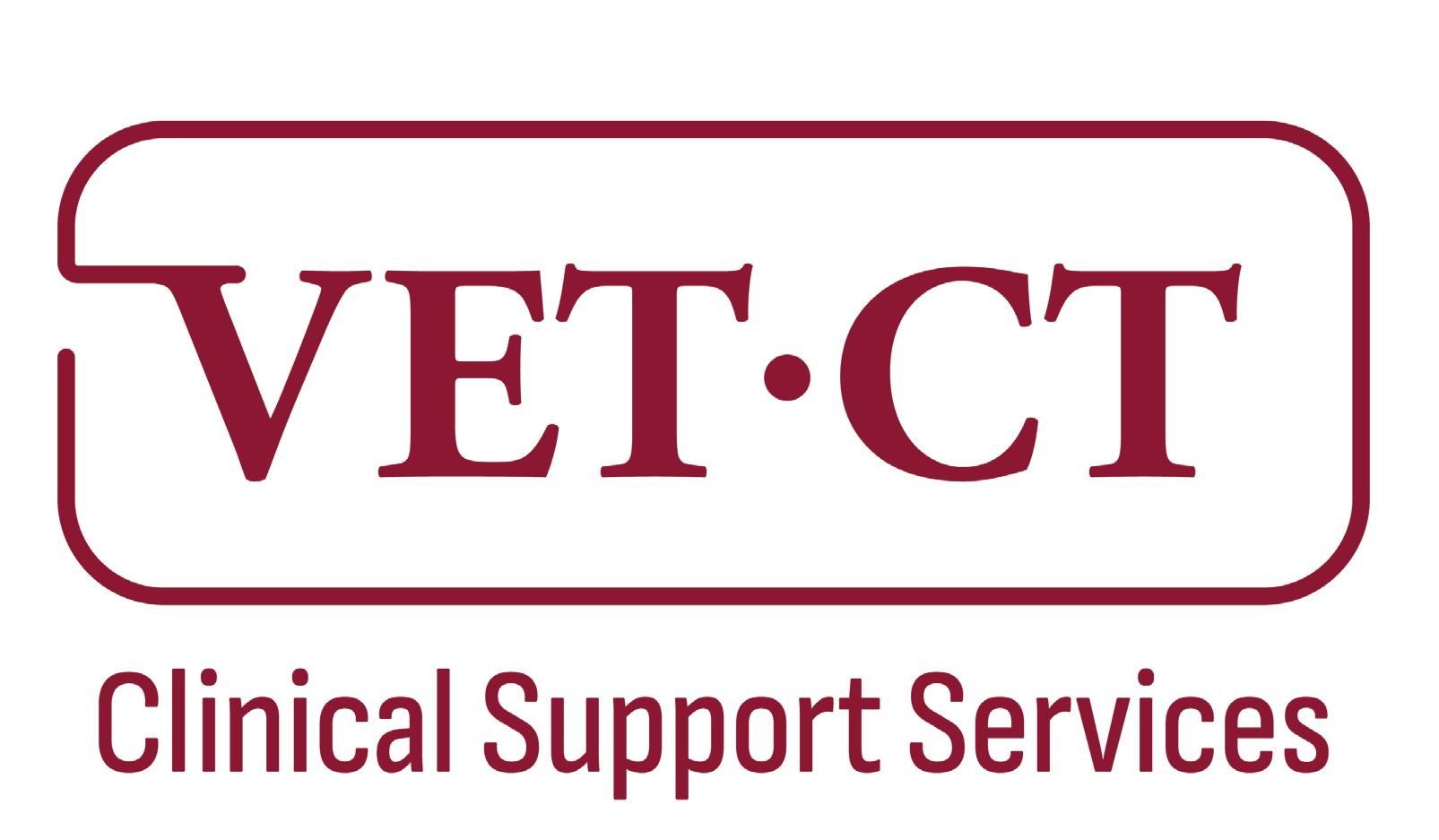
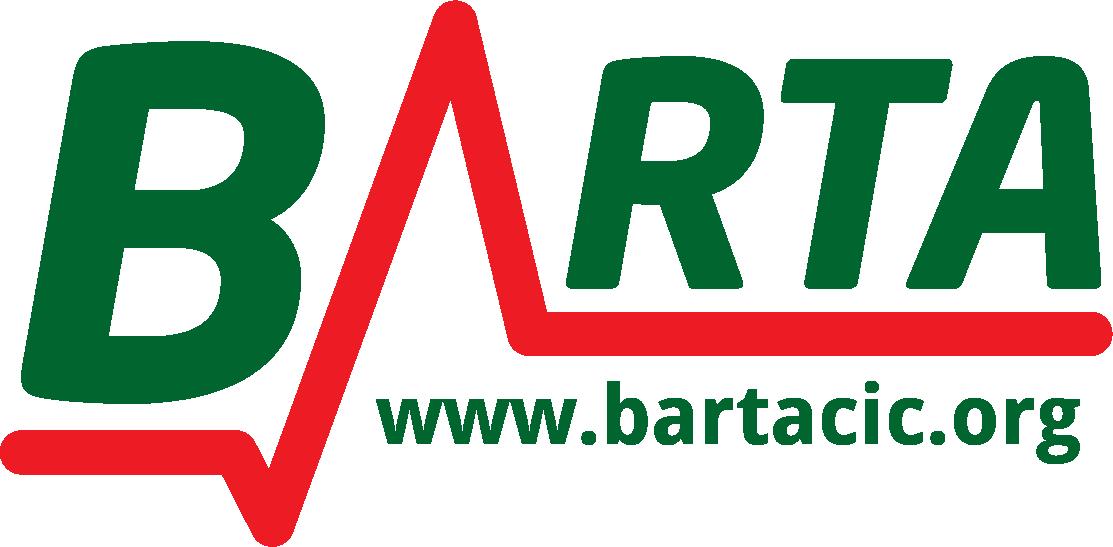





Wednesday 28 August

Speaker: Andy Brunskill
Focus: Physical Presence in Virtual Worlds
Andy is Co-Founder of Existent - a company specialising in realistic, physical VR experiences.
He has a lifelong dedication to exploring the most meaningful tools for crossdiscipline collaboration. Prior to founding Existent, Andy was a multidisciplinary theatre and film creative and director. Amongst many things he created the music video for “Daddy” by Coldplay with Aardman Animations; directed a summer parade for Longleat Safari Park; a site specific puppetry show with young people for the National Theatre; a show for ASD children at the Young Vic; a show with ASD children for the National Theatre; directed a dance show for the 2012 cultural olympiad. He has been a lead creative on TV commercials, movies, plays and was also Associate Director of War Horse in the West End in 2015.
Thursday 29th August
Speakers: Adam Mugford and Nicky Housby Skeggs.
Focus: Strategies to enhance emergency team preparedness and reduce the pressures in emergency veterinary care.
Importance of evidence-based clinical protocols for standardizing treatment and minimizing errors.
• Critical aspects of teamwork, communication, and equipment readiness and simulation based practice
• Cognitive strategies for managing mental demands, including the use of checklists and communication techniques like Call-Outs and Check-Backs to improve team coordination.
Objective: To equip veterinary professionals with the knowledge and skills needed to optimize patient outcomes and enhance the efficiency of emergency response teams.
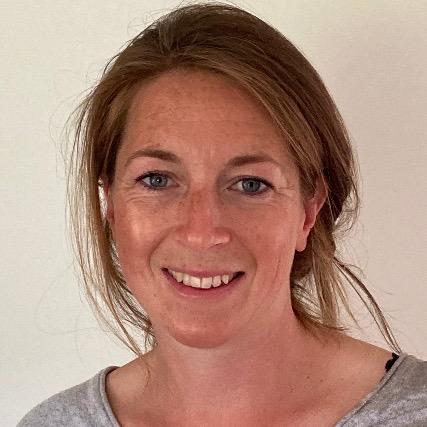
Nicky Housby-Skeggs
BARTA Board Chair, Veterinary Director at The Horse Trust and BEVA Council Member
Nicky graduated from the Royal Veterinary College in 2007 and joined The Royal Army Veterinary Corps. She served for 10 years: Firstly, with Military Working Dogs preparing them and their handlers for deployment to Iraq and Afghanistan. Later she served as the veterinary officer for The King’s Troop Royal Horse Artillery and The Household Cavalry Mounted Regiment where she developed Large Animal Rescue training as a core activity for the regiments. During this time, she was part of a large and complex team responsible for planning and providing emergency cover for high profile public events.
After leaving the military Nicky worked in ambulatory equine practice before moving to the charity sector. She now works as the Veterinary Director for The Horse Trust charity providing both the onsite veterinary provision for 150 residents, she provides internal and external training in many areas of equine care as well as providing part of the RVC final year rotations. Nicky is the Chairperson for the Board of directors for the British Animal Rescue and Trauma Association (BARTA).
Getting involved in BARTA early in her veterinary career, the skills learnt gave Nicky a huge amount of confidence in tackling emergency and rescue scenarios. Throughout her time in the mounted units Nicky worked with an incredibly competent rescue team and used the skills and techniques they were trained in to resolve some complex situations in the public eye. Working closely with BARTA to share experiences, learn, and further develop the training.
Animals are an integral and essential part of human life either as companions, protectors, or a means of income. Incidents involving animals occur frequently and there is a huge potential for risk to human and animal life both through direct injury and the morbidity that follows an incident from the single animal trapped in a ditch to large scale flooding and evacuation.
Ensuring people are trained, and all incidents are well prepared will improve the quality of lives of both people and animals worldwide.












Adam Mugford BVetMed MVetMed DACVECC FRCVS Chief Medical and Development Officer BSA Animal Blood Bank and Executive Director EVECC Congress Board
A graduate of the RVC, following an internship at the same institution, he spent 2 years in general practice, including nights in a London hospital. Completing his training in ECC again at the RVC, he is a Diplomate of the American College of Veterinary Emergency and Critical Care and holds a master’s degree. He is an RCVS Recognised Specialist in ECC.
An Honorary Lecturer of the University of Liverpool for 10 years, he teaches and examines for advanced certificates for several organisations. He has lectured internationally and is a RECOVER CPR instructor utilising simulation based training to deliver effective CPR. He co-authoring the BSAVA national triage guidance for use during the COVID-19 pandemic and subsequently adopted internationally and has consulted for the Royal Army Veterinary Core, UK Health Security Agency and Rothchilds. He has achieved the NHS Leadership Academy Award in Health Care Leadership Foundations and is a co-supervisor of the ECC residency program at the University of Liege, Belgium.
In full time specialist clinical practice for over a decade, prior roles have include group head of ECC for hospitals overseeing out-of-hours provision to 50+ sites. Clinical board chair of a specialist hospital and vice-chair of the group clinical advisory board supporting over 400 general practices within the CVS Group. Then joining a internationally respected hospital to lead ECC, acting as the subject matter expert for haematology and transfusion to the Linnaeus Clinical Board. As the ECC representative to the RCVS Practice Standards Group responsible for reviewing the Practice Standards Scheme. He is the Executive Director of the EVECC Congress Board on behalf of EVECCS, ECVECC and VECCUS and a member of the ACVECC education committee developing postgraduate emergency education competency frameworks for North America.
Through BARTA he volunteers as an advisor to contribute to best practice guidelines for incidents involving animals and the UK emergency services chairing the Small Animal Working Group. This work awarded an RCVS Knowledge Award ‘one to watch’ for advancing the quality of care via the groups guidelines utilising simulation based training for the provision of oxygen therapy to animals at emergency incidents.
Elected to the Fellowship of the RCVS, in recognition of outstanding contributions to clinical practice in 2022. Adam was excited to join the leadership of BSA Animal Blood Bank in July as it continues to expand its leading provision of transfusion medicine supporting teams caring for patients across Europe.











Wednesday 28 August
15:00–15:45
Raising student and staff interest and engagement to optimise model use: The story of Henryetta Moorni-Moorni McCowFace
School of Veterinary Medicine, Murdoch University, Western Australia
It can be difficult to get student and staff enthusiasm for new clinical skills models. When the opportunity arose to modify a life-sized fibreglass cow, students and staff were involved from the beginning to raise interest and engagement. First, an email introduced Mrs Cow as well as all features that were planned to be added. Staff and students were invited to participate in a naming competition and to submit ideas for additional modifications that were not included yet. A naming committee decided on ‘Henryetta Moorni-Moorni McCowface’. ‘Henryetta’ is based on Henrietta Lacks whose story within medical research is fascinating! With such an inspiring name we hope that Henryetta will make a difference within Veterinary Education. ‘Moorni-Moorni’ means very black in Noongar (Aboriginal language). When Henryetta’s modifications were done, and her right side had some space, a local indigenous artist helped us paint her. This was another excellent opportunity to advertise Henryetta as all staff and students were invited to participate. The Noongar art piece represents the coming together, diversity and journey of students. As the art is based on yarning circles which are a symbol of sharing knowledge, building respectful relationships, and fostering a culture of reflection, we hoped to create a positive and engaging story around Henryetta that allows students and staff alike to embrace the learning opportunities she offers. Henryetta is now not only a unique teaching model but also beautiful, telling a story, and there is probably no one at our vet school who doesn’t know her!
Comparison of models for teaching intravenous cannulation in the dog
McIntyre, S., Sharp, P.
University of Surrey, UK
Background: Models and simulations are used in veterinary education to allow students to practice surgical skills in order to obtain clinical competence. Intravenous catheterization is an important skill in veterinary medicine which allows for crystalloid and colloid fluid administration (including blood products), administration of intravenous drugs and anaesthetic agents.
Materials & Methods: Intravenous catheterization of companion animals is taught in the third year of the curriculum at Surrey, but is assessed as a direct observational procedure in fourth year students in the week immediately prior to performing the skill on a live animal as part of a neutering clinic. A new more realistic silicone leg was created with the hope that it would better prepare students for intravenous catheterization of the live patient. The models were compared by looking at performance scores achieved when marking against a 20-point OSCE checklist. Group 1 (n=51) was assessed on the existing simple foam model and Group 2 (n=56) was assessed on the new silicone model. The students in each of the groups were then marked again (using the same OSCE checklist) when performing the skill on the live patient.
Results: For performance on the models, Group 2 (new model) scored significantly higher (mean 18.4) than Group 1 (Gp1 mean=15.4, Gp2 mean=18.4, p=<0.01). For performance on the live patient, the students in Group 2, scored significantly higher than Group 1 (Gp1 mean=16.4, Gp2 mean=18.3, p=<0.01).
Take Home Message: A new model which is anatomically more realistic than its predecessor has shown to increase students performance of intravenous catheterization in live patients.
Exploration of programme level interest in Bioveterinary Sciences and its associated clinical skills amongst Malaysian Pre-University students.
Rajoo, T., Watanabe, M. IMU University
Background: Bioveterinary Science, an interdisciplinary field that merges aspects of biology and veterinary medicine, offers a unique opportunity for individuals passionate about animal health and welfare. This is an area that is closely linked to One Health education emphasizing the interconnectedness of human, animal, and environmental health. This study aimed to investigate the level of interest among Malaysian pre-university students in pursuing an undergraduate degree in Bioveterinary Science and its associated clinical skills in influencing decision making.
Materials & Methods: A two-part survey was designed to explore (i) interest in Bioveterinary Science programme (ii) preference in interest and importance of the associated clinical skills relevant to the programme. The survey was conducted among the pre-university students at IMU university. The first part of the survey assessed students' awareness of Bioveterinary Science as a career path, their perceived importance of animal health, and their motivation for pursuing higher education in this field.
Results: Out of the 157 respondents, 38.9% indicated their interest in pursuing a degree in Bioveterinary Science and 37.6% were uncertain. The results revealed that the most important consideration factor was employability, followed by the programme content and opportunities for credit transfer to overseas universities. The most common reasons for selecting a Bioveterinary Science programme were interest in animal and pet welfare, followed by pathway to pursuing veterinary medicine and high earnings after graduation. The follow-up survey was then conducted to determine interest in clinical skills activities and whether participants were aware of the importance of clinical skills training for professional courses. This involved assessing the types of clinical skills models and approach to teaching that students will find useful in their programme. The results of the survey are currently being tabulated and will be presented.
Take Home Message: These results indicate that Malaysian pre-university students are keen to pursue Bioveterinary Science due to their interest in animal well-being. It is crucial that they explore the career options offered by the programme early so that they can make informed decisions about their future careers. This study also informs educational institutions and policymakers about potential strategies to promote and support the development of clinical skill teaching that is not only context specific but on that also addresses needs of the students.










Immersive Simulation and the -ologies (pathophysiology, clinical pathology, pharmacology): Promoting content application, clinical reasoning development and emphasizing clinical relevance of the pre-clinical veterinary curriculum through immersive simulation
Cornell University College of Veterinary Medicine
Background: Students benefit from opportunities to apply baseline knowledge to increasingly complex scenarios and learn from feedback on decisions. Immersive shock simulations challenge first-year veterinary students to utilize basic science to assess a patient and make clinical decisions.
Materials & Methods: Psychological safety is established, and students are oriented to the simulator’s capabilities, including: heart/lung sounds, femoral pulses, pulse oximetry, blood pressure, and electrocardiogram. IV fluids, oxygen, and emergency medications can be administered. Groups of 6 participate, with teams of 2 each running 1 of 3 simulations. Their colleagues observe from an adjacent room. They utilize physical exam skills and pathophysiology knowledge to determine the type of shock and stabilize accordingly. They have 4 minutes to assess and treat. If treatment isn’t initiated in that time, the patient arrests. Debrief follows each simulation.
Results: Decision points for each simulation: (1) Is my patient in hypovolemic or cardiogenic shock? (2) Does my patient need intravenous fluid support or furosemide? Upon completion, students should be able to: (1) differentiate hypovolemic from cardiogenic shock based on physical exam and diagnostics; (2) discuss the pathophysiologic mechanisms of the patient’s clinical signs; (3) devise a stabilization plan for both types of shock; (4) discuss each treatment’s physiologic mechanism of action.
Take Home Message: Immersive simulation supports the basic sciences, development of communication and clinical reasoning skills in first-year students. We hypothesize that early student exposure to simulation reduces stress associated with more advanced immersive simulations and management of cases on clinical rotations, enabling enhanced learning later in the curriculum.
From research findings to reality: the story of the clinical skills initiatives at Chattogram Veterinary and Animal Sciences University in Bangladesh
Mohsin, A.S.1, Kumer Paul, S.1, Akter, A. 1, Paul, T.1, Sarker, D.1, Sutradhar, B.C.1, Dey, T.1, Rahman, M.1, Das, B.C.1, Mannan, A.1, Bostami, M.B.1, Baillie, S.2, Hoque, A.1
1Chattogram Veterinary and Animal Sciences University
2University of Bristol, UK
Background: Clinical skills laboratories enable veterinary students to practice in a safe environment before entering real-life clinical settings. The first clinical skills laboratory in Bangladesh was established at Chattogram Veterinary and Animal Sciences University in 2019. A survey was then conducted to identify the most important clinical skills for veterinarians working in Bangladesh.1 The current project aimed to further enhance our clinical skills training based on the prioritised skills list.
Material & Methods: Learning resources were prepared including online prework in Google Classroom, models for practicing skills and instruction booklets for teaching. An additional clinical skills laboratory was designed with more space and equipment to support further integration of skills teaching into our curriculum.
Results: Models and accompanying learning resources were developed for animal handling, administering medications, injection techniques, lancing abscesses, clinical examination, surgical preparation, and basic surgical skills using locally available economically viable options. The additional clinical skills laboratory was opened at our Hathazari campus (April 2024).
Take Home Message: Using results of a research study that identified the regionally important skills allowed us to focus development on the most relevant models for our students. With the increasing global interest in opening clinical skills laboratories, our approach serves as an example for other regions on how to ensure resources are utilised most effectively to support student skill development in preparation for working in their local professional context.
1 Paul et al. (2024) Establishing the most important clinical skills for new graduate veterinarians by comparing published lists with regional stakeholder expectations: A Bangladesh experience. J Vet Med Educ, 51(1):85-94
Which hand should I use? Dispelling folklore around palpation skills in large animals
University of Bristol, UK
Background: Historically, it has been suggested that the left hand should be used to perform large animal rectal palpation. When learning, most students would choose their dominant hand, but report that some practitioners recommend right-handers use the left hand. Therefore, investigations were undertaken to answer the question ‘Which hand should I use?’.
Materials & Methods: A multi-part study was undertaken. The literature was searched for evidence of hand ability for palpation-based skills. A survey was sent to bovine practitioners to establish which hand was used for rectal palpation and the rationale for the choice. An experiment was conducted with novice students to establish hand performance for key palpation-based skills (determination of object size and softness/firmness) using psychophysical techniques in a virtual haptic environment.
Results: The literature indicated that for most sensory-based abilities there is no difference between hands. For motor-based skills the dominant hand is superior due to dexterity, strength and slower fatigue. The practitioner survey found similar handedness to the general population (10% left-handed) and just under half using the left hand for rectal palpation. Reasons for right-handers using the left hand included being told to and leaving the right hand free for dexterous tasks. For students, there was no difference in hand performance for size and softness/firmness determination although feedback indicated greater confidence in the dominant hand.
Take Home Message: When answering ‘Which hand should I use?’ considerations include sensory ability, motor performance and confidence when learning new skills. Overall, the dominant hand is the best choice for students learning palpation-based skills for large animals.
Evaluation of the training in the Clinical Skills Lab for students in the practical year rotation of the Clinic for Small Mammal, Reptile and Avian Medicine and Surgery of the University for Veterinary Medicine in Hannover
Bettermann, V., Knoll, MT., Tipold, A., Pees, M., Hetterich, J., Legler, M., Wissing, S.
University of Veterinary Medicine Hannover
Background: For students in the practical year (PY), study regulations require a rotation in a clinical facility of the University of Veterinary Medicine Hannover. For preparation, students undergo training of clinical skills on models in the Clinical Skills Lab (CSL) before transferring these first-day skills to live animals. A training followed by an electronic objectively structured examination (eOSCE) for the Clinic for Small Mammal, Reptile and Avian Medicine and Surgery was implemented in 2021. In 2023, learning content was digitized as part of a Moodle course.
Materials & Methods: Since 2023, CSL training for the described clinic has been evaluated by PY students using a questionnaire in the form of a four-stage Likert scale and free text answers. Aspects regarding organization and process of the training week, preparation with the Moodle course and the simulators were queried.
Results: Students rated individual aspects of simulators, relevance of the content and the time frame predominantly positively. In addition, the average results of Moodle tasks and eOSCE results were always above the passing threshold of 60%. Students expressed their requests for more development and integration of additional simulators for advanced skills on reptiles and birds as well as free availability of teaching content outside the PY.
Take Home Message: Students' feedback led to constant improvements regarding preparation for the PY. They report increased confidence in transferring clinical skills to live animals through the combination of practical training and the teaching content provided on the platform.
Colorado State University
The Virtual Animal Anatomy (VAA) Program from Colorado State University (CSU) has been around for decades, continuing to develop the images and content for use in the undergraduate courses and the professional veterinary medical program. It is often utilized by students and instructors alongside cadavers in a laboratory. For over a decade an online undergraduate Domestic Animal Anatomy course has been offered at CSU, incorporating the VAA program into the course in an online laboratory without the use of additional cadavers. Decreasing the use of cadavers has ties to environmental responsibility and animal ethics and welfare issues within our industry. This course has been modified throughout the years to fit Universal Design principles and has been the center of my continued pursuit for accessibility and proactive neurodiverse teaching. Student enrolment includes pre veterinary and animal science undergraduate students, residents and interns at the CSU Veterinary Teaching Hospital, and current veterinary students in need of remediation of their veterinary anatomy course or pursuing further preparation for their veterinary course in the semester to come. The presentation will review the current use of the VAA in the undergraduate course, development of an online Clinical Anatomy course in the Veterinary Clinical Care Graduate Program, and ideas for application into current veterinary programs that utilize cadavers in an anatomy course.
Learning objectives:
Review the CSU VAA program within a fully online Domestic Animal Anatomy course.
Compare face-to-face cadaver laboratory coursework to virtual coursework. Modify existing “traditional” anatomy instructional format to a virtual platform.
Virtual Learning and Model Use in the Veterinary Clinical Care Graduate Program to Create the Veterinary Professional Associate
Lanning, S., Jensen, W. Colorado State University
Our mission for the Master of Science in Veterinary Clinical Care (MSB VCC) is to create a new professional position in veterinary medicine: the Veterinary Professional Associate (VPA). The VPA will bolster healthcare outcomes, operations of healthcare teams and increase access to veterinary care. The VPA will improve health care delivery by offering additional competencies in quality control, workflows, and standard operating protocols, as well as the technology and processes involved in patient data acquisition, relieving the veterinarian from these assessments. The VPA’s capability to serve in a front-line capacity and perform a variety of downstream medical and surgical tasks will complement and enhance the efficiencies and proficiencies of the veterinary healthcare team. The MSB VCC program will apply a core of Universal Design principles built into the lecture and laboratory courses, with multimodal learning options available to reach various learner types. Cadavers will be minimally used in face-to-face laboratories, and then utilized throughout that semester of the program for other procedures, to make best use of cadaver animals and cut down on live animal use. Models and simulations are already in use in the CSU DVM program. Lowfidelity and high-fidelity models and simulations will be incorporated throughout the program to focus on limiting the need for live and cadaver animals.
Continued collaboration with the School of Biomedical Engineering to develop models that focus on anatomically correct, durable, reusable, replaceable, and environmentally friendly models.
Teaching of interprofessional and client communication through an immersive simulation workshop involving veterinary medicine, veterinary nursing, and veterinary physiotherapy students
Allen, C., Robertson, E. Atkinson, C., Morrell, H. Harper Keele Veterinary School, UK
Background: Interprofessional education is utilised in medical education to promote interprofessional teamwork, which is important for optimising patient outcomes. The ability to work effectively as part of an interprofessional team is included in the RCVS Day One Competences for vets and is also reflected in the equivalent requirements for Registered Veterinary Nurses. However, it is rare for those who will be working together closely in their professional careers to be given an opportunity to practise communication with each other during their undergraduate teaching.
Materials & Methods: Small groups of veterinary students, veterinary nursing students, and veterinary physiotherapy students interacted with simulated clients, and each other, in three immersive simulated clinical scenarios. The focus was on relaying clinical information, collaborative development of a management plan, and communication of this to the client. Following each simulation, feedback was provided by those involved, peer observers, the simulated client, and a facilitator in a debrief.
Results: Vet students said they gained a better understanding of the role a veterinary physiotherapist and veterinary nurse can play in the management of clinical cases, the information they may need to convey to them, and the need to accept one’s own limitations. The nursing and physiotherapy students noted the importance of discussing contextual factors in development of a management plan.
University of Surrey, UK
Background: Previously at the University of Surrey School of Veterinary Medicine, there have been difficulties in sourcing cadaver materials for students to learn the skill of dental scaling and polishing. Therefore, working with academics in the small animal field, the technical team here at Surrey have created a new scale and polish model, which has been made with the aim to replace the requirement for cadaver materials. The benefits of this more sustainable model include the fact that it is reusable, easily maintained, and more economically friendly.
Materials & Methods: The model is made by scanning a canine skull and converting the scan into a file for 3D printing. From here, using a white PLA filament, the skull is printed in two separate parts, the mandible, and the maxilla. A PowerMesh fabric is glued onto the mandible, covering the bottom of the mandible, going up to the tooth line of the model, to increase durability, and to simulate the submandibular space. Silicone is then poured over the mesh with the mandible laid teeth side down, allowing for full coverage of silicone over the inside and outside of the teeth. Once dried, the silicone is then cut to simulate a gumline of each tooth. This allows students to scale under the gumline. The maxilla and mandible are then screwed into place, with the jaw sitting at a 45̊ angle to replicate the open mouth of the animal. Red solid tubing is then inserted from the joining of the jaw hinge, past the incisors and secured by a cable tie. This tube replicates the endotracheal tube the dog would have in place whilst under anaesthesia. This means that students are required to consider their hand positioning and be aware of the manipulations needed to navigate around the ‘endotracheal tube’ to get to where they are scaling and polishing. Finally, the plaque paste is made from a combination of water, casting powder and coffee, and painted onto the teeth and under the gum.
Results: This model was used in the 2022-23 and 2023-24 teaching periods, alongside the 2023 Late Summer Assessments, with positive feedback from both academics and students, with hopes to conduct research to evaluate the effectiveness of the model, versus teaching with cadaver material, later in the year.
Chaplin, M., Prutton, A., Cooper, A., Maile, C.
University of Surrey, UK
Implanting an equine microchip is considered to be a day 1 skill according to the RCVS however students may have limited opportunities to practice this skill on rotations and placements due to necessity of performing this skill correctly. The equine clinical skills team at the University of Surrey was tasked with developing a model that students can practice implanting a microchip into and also check for the presence of an existing microchip using the microchip scanner. Using the existing wall mounted head and neck models used for intravenous injections, an area on the dorsal aspect of the neck was removed. A combination of silicone, neoprene and power mesh was used to make an insert to represent the nuchal ligament. A small pouch holding a microchip was able to be inserted behind the nuchal ligament so that students could scan the horse following the procedure to ensure the microchip was implanted correctly. The use of a model to practice implanting and checking for an equine microchip provides an opportunity for students to gain confidence and proficiency in performing and important day 1 skill.
Thursday 29 August
15:00–15:45
Development of a life-sized equine gastrointestinal tract: Making more than 25m of confusing anatomy easier digestible
Annandale, A., Jones, K.
School of Veterinary Medicine, Murdoch University, Western Australia
Students find learning equine gastrointestinal tract (GIT) anatomy particularly difficult. This is largely due to the unique conformation of the ascending colon, which has considerable specialisation compared to other species. An understanding of this anatomy is important and a prerequisite to understanding pathological equine GIT conditions. To complement the traditional teaching of equine GIT anatomy (didactic lectures, workshops and practical sessions using fresh and fixed specimens), a life-sized fabric equine GIT tract was developed and constructed using pink kids’ leggings to represent small intestines while suede fabric was used for the caecum, colon and rectum. Mesentery, mesocolon and ileocaecal fold were made of white tulle fabric, a spleen of neoprene fabric and a tennis ball resembles the left kidney. Varying shades of grey, green, blue and brown fabric were used to colour-code the components of the large intestinal. Details like taeniae were added using elastic and fabric trimmings. Entry points allow for adding intestinal content (polyfill stuffing) and faecal balls (6cm sponge balls). The model can be used as a benchtop model or in a fibreglass horse that has been modified to allow for abdominal access, visualisation and palpation. Features mimicking specific pathological GIT conditions such as impactions, displacements and strangulations can be added. This enables use of this model not only for anatomy but equine medicine too. This life-sized, lowcost (AU$400.00), colour-coded model is an additional learning resource giving students repeated practice opportunities to master the understanding of equine GIT anatomy as well as GIT pathologies.
Little helpers and an equine dental model: establishing a dermestid beetle colony to create veterinary teaching models
Annandale, A., Coiacetto, F.J., Kelly, J., Wong, Z.
Credit to Heather Crawford for providing the starter colony of beetles
School of Veterinary Medicine, Murdoch University, Western Australia
Bone specimens serve as a valuable resource for many teaching models. However, the traditional maceration process for preservation is time-consuming, unpleasant and can yield inconsistent results. As an alternative, a dermestid beetle colony was established within the necropsy suite at the Murdoch University Veterinary School. Dermestid beetles, also known as “flesh-eating beetles”, are incredible helpers to remove flesh from bones, and are commonly found in Western Australia. They love warm and dark conditions, and burrowing through polystyrene, where they hide and pupate. The first beetle project was a horse head with dental abnormalities, obtained during a routine post-mortem
examination. Skin, large muscle and tissue parts were removed before drying the skull in a bio-safety cabinet over 3 days. The skull was then placed in a large black plastic storage box with airflow modifications containing polystyrene parts and the initial beetle colony (Dermestes maculatus). The beetle cleaning process took about three months. The skull was then simmered in degreaser to extract all natural oils before bleaching it in 1% hydrogen peroxide. Dental hooks and sharp edges were then reduced on the right side, while leaving the left side with abnormalities. The dental model is set up with a mouth gag enabling students to visualise and palpate abnormalities while comparing it to a floated normal side. Dental record forms are available for completion at the station. Dermestid beetle colonies are a low-maintenance and easy way to create bone specimens for teaching and have resulted in a great equine dental model.
Gilbert, G., Mills, T.
Texas Tech University
Background: Achieving clinical competence in veterinary medicine is often constrained by limited opportunities for hands-on practice. "Popeye the Pug" is a task trainer designed to provide standardized exposure and training across six critical facial procedures, enhancing uniformity in competence among learners. The targeted skills include proptosed eye replacement, tarsorrhaphy, third eyelid replacement, lip laceration repair, meibomian gland wedge resection closure techniques, and nasal wedge resection for stenotic nares—procedures essential for proficiency in canine facial surgery.
Materials & Methods: The development of this task trainer involved scanning the facial features of a pug and converting it into a three-dimensional (3D) model. The 3D model was modified to simulate various conditions: a proptosed eye, a tumorous eyelid, an enlarged third eyelid, lip laceration, and nasal stenosis with airway restriction. The resulting stereolithography (STL) file was divided into three parts: the proptosed eye, the affected facial areas (eyelids, nose, and lips), and the remainder of the head up to a transverse plane caudal to the ear canals. Using Stereolithography (SLA) printing with white V4 resin, these parts were individually printed and then molded in different densities of platinum cure silicone for realistic texture and durability. Power-mesh was embedded within the silicone of the third eyelid, nares, and lips to enhance structural integrity and suture retention. The remainder of the head was formed using vacuum molding with a 0.06-inch Acrylonitrile Butadiene Styrene (ABS) pinseal sheet. Cast Acrylic was used to provide structural support and a stand that allows the face to be presented at a 30-degree angle in a medial and bi-lateral positions for optimal positioning to complete all procedures.
Results: Initial training sessions with "Popeye the Pug" demonstrated significant improvements in learners' surgical skills and confidence. Trainees reported a better understanding of the anatomical intricacies and practical handling of surgical instruments.
Take Home Message: "Popeye the Pug" enhances skill acquisition and confidence, preparing students more thoroughly for routine canine facial procedures.











Evaluation of simulators for training of artificial insemination in cattle
Lefevre, P.1, Schüller, L.2, Schulze, M.1, Jung, M.1
1Institute for Reproduction of Farm Animals Schönow 2Veteducators GmbH
In Germany, the first practical training in artificial insemination (AI) must take place on suitable phantoms in courses for own stock-inseminators and insemination officers (TierZDV, 2021). The aim of the ongoing study was to evaluate the simulators “Bovine Theriogenology Model” (VSI; Canada), “Bovine Breeder™ artificial insemination simulator” (BBS; Realityworks; USA) and “Smart Repro Cow” (SRC; Germany) by course participants (n = 313). Seventy participants were divided into three groups (n = 23-24 each) according to their experience level. Each group received AI training on one simulator. Thereafter, they practiced on live animals over two days. After each insemination intent, the course instructor confirmed the location of the insemination device in the animal by transrectal palpation. Subsequently, the participants practiced AI on all three simulators and evaluated them using a questionnaire. In addition, the SRC-Simulator was tested by 30 experienced veterinarians and evaluated via a questionnaire. In 39.9% of all cases (125/313), the course instructor confirmed that the insemination device was in the uterine body or uterine horn (= success). The attempts of the SRC Group were rated successful in 48.6% of transrectal checks by the instructor, 35,3 % of the attempts in the VSI and Realityworks group each. On a scale of 1-6 (1 = no realistic feeling at all; 6 = very realistic), the haptics of the internal organs were rated as follow: SRC = 5.0 points, VSI = 4.2 points, and BBS = 2.9 points. Most respondents (87,9 %) preferred the SRC simulator as a training model. The majority of veterinarians (96,7 %) rated the exercise of the AI on the SRC simulator as realistic. Due to training on the SRC simulator, participants were more successful on live animals than others. Concluding, based on the results of this study, the SRC simulator was evaluated with the best haptics of the internal organs and rated as the preferred training model for AI.
Background: Offering training and practice to veterinary students on Defibrillators and (Automated External Defibrillators) AEDs can broaden their skill set and their confidence at operating these types of devices. While training is worthwhile, it does come with a fair share of obstacles such as risks of accidental defibrillation, equipment breakage, limits to the devices actual use due to electrocution and lack of waveforms and telemetry. These limitations can prevent training with defibrillators during critical care simulations.
Materials & Methods: Simulated defibrillators were constructed with low-cost materials that physically mimicked the construction and function of an actual defibrillator. The housing was constructed from 0.25-inch white cast acrylic, in which pieces were cut and milled to interface with the accompanying items such as limb leads and defibrillator paddles. Leads and paddles were secured to their designated spots with the use of strong magnets, allowing attachment and easy removal of the paddles, and a detachable interface for all leads that allowed for assembly of the device, as well as a safety feature to prevent the simulated defibrillator from being dislodged from its location by pulling leads to the patient. The leads were made from color coded (red, white, black, green, etc.) paracord with a small alligator clip affixed to the patient end, and a smooth, detachable metal housing that could adhere to the magnets dedicated to the lead connection point. The paddle wires were also designed from paracord affixed to 3D Printed Paddles with metal washer inserts to connect to the top of the defibrillator housing with embedded magnets. The touch screen installed in the bezel of the front-face was a 10” screen with speakers. USB-C and HDMI connections allow the touch screen to be attached to the controlling computer.
The user interface and control interface are provided by open-source software called infirmary-integrated, which can be operated on a local connection or through an internet connection.
Results: The development of simulated defibrillators has provided a means for many students to receive training and practice in a cost-effective and efficient manner while maintaining the steps of safe defibrillator operation.
Take Home Message: The use of simulated defibrillators provides a means and opportunity for learners to gain proficiency and confidence in operating defibrillators and managing critical care situations.
Reimagination of the Equine Simulator 1.0 by SurgiReal
St. George’s University, School of Veterinary Medicine
Background: We are often challenged with the ability to purchase the number of veterinary simulation models needed. It is important to have models that target specific clinical skills that veterinary students will require in their clinical year and beyond. A voluntary survey of SGU SVM clinical year students 2023–2024, indicated that the large animal skill students felt unprepared for was equine/large animal catheter placement together with IV administration/blood aspiration (39%), the second highest being rectal palpation (21%).
Materials & Methods: The original Equine Simulator 1.0 by SurgiReal was mounted on a piece of plywood measuring 63 cm x 100 cm x 1.2 cm using 7/8” screws. This plywood was then fastened to two wooden square based (9 cm x 9 cm) columns measuring 170 cm (H). These were then mounted to a wheeled wooden base. A 30 x 33 x 22 cm piece of 2 mm felt material was cut and using Velcro® 8.8 cm x 1.9 cm strips attached over the midsection of the neck to simulate equine haired skin.
Results: A moveable model in a vertical position at suitable equine height, allowing for students to practice IV catheterization in real-life orientation. Felt pieces can be replaced with heavy usage and thicker pieces (4 mm) substituted for bovine IV catheterization simulation.
Take Home Message: This model was one that had not been used much in the original orientation and now is able to be utilized for IV catheter placement as well as simulating blood draws and IV administration of medication.
Equine Cranial Nerve
Learning on the Equine Neck Venipuncture & Intramuscular Injection Model (VSI)
St. George’s University, School of Veterinary Medicine
There is a need to practice equine clinical skills on models before live animals are utilized, given the small size of the teaching herds in most veterinary institutions. The cranial nerve exam on large animals is frequently a cause of stress for veterinary students, this self-learning adaptation to our current Equine Neck Venipuncture & Intramuscular Injection model from Veterinary Simulator Industries (VSI) allows a more visual and tactical means to become proficient in this exam. Using 1.5 cm Velcro® General-Purpose Stick-On circles to attach to the equine head model, with the corresponding piece attached to a colour coded laminated card. For sites where several cranial nerves can be assessed, cards are the same colour with different CN number and name. A booklet is provided with all the correct pairings for the student to check their work. Sites that need an additional piece of equipment to evaluate have a tool symbol on the card, which can then be matched to the tool (i.e. penlight), providing a more tactile means of practicing a cranial nerve exam on a simulation model horse head to become more confident when assessing a live animal. Creating a new way to learn a
routine exam at the learner’s pace should lead to better retention of the material. A survey will be utilized in the fall 2024 term to assess this in our SGU SVM sixth term students.
Hunt, J.1, Hughes, C.2, Asciutto, M.1, T. Johnson, J.T.1
1Lincoln Memorial University College of Veterinary Medicine
2Rowland Veterinary Services, New Tazewell TN
Background: Cats are extremely popular pets with the reputation of being uncooperative for even common procedures, such as venipuncture. In this study, we sought to create and validate a feline medial saphenous venipuncture model and rubric for use in veterinary training. The validation framework consisted of content evidence, internal structure evidence, and relationship with other variables.
Materials & Methods: Eleven veterinarians and veterinary technicians who were experienced with the procedure evaluated the model by means of a survey. These experienced participants, along with 25 veterinary students who were novices at the skill, performed venipuncture on the model while being digitally recorded.
Results: One hundred percent of the experienced participants and 88% of the novices reported that the model was helpful for teaching feline medial saphenous venipuncture. They identified a few areas for continued improvement, including increasing the blood flow rate and decreasing the vessel wall rigidity. Experienced users’ rubric scores were significantly higher than novice students’ (experienced, M = 13.4; novice M = 16.5; p = .05), suggesting that the model’s features were adequate to differentiate the performances of various users. Internal consistency of the eight-item rubric was acceptable at .74.
Take Home Message: These results supported validation of the feline medial saphenous model and rubric for use in veterinary education.
Hunt, J.1, Devine, E.1, McCracken, M.2, Miller, L.1, Miller, D.1, Anderson, S.1
1Lincoln Memorial University College of Veterinary Medicine
2University of Missouri College of Veterinary Medicine
Background: Castration is one of the most common surgeries performed in equine practice. Veterinary students require deliberate practice to reach competence in surgical procedures including equine castration, but availability of patients limits students’ practice opportunities.
Materials & Methods: A recumbent equine castration model was created and evaluated using a validation framework consisting of content evidence (expert opinion), internal structure evidence (reliability of scores produced by the accompanying rubric), and evidence of relationship with other variables (the difference in scores between experts and students). A convenience sample of third-year students who had never performed equine castration (n = 24) and veterinarians who had performed equine castration (n = 25) performed surgery on the model while being video recorded. Participants completed a post-operative survey about the model.
Results: All veterinarians (100%) agreed/strongly agreed that the model was suitable for teaching students the steps to perform equine castration and for assessing students’ skill. The checklist scores had good internal consistency (a = 0.805). Veterinarians performed the castration faster than students (p = .036) and achieved a higher total global rating score (p = .003). There was no significant
difference between groups in total checklist score or individual checklist items, except veterinarians were more likely to check both sides for bleeding (p = .038).
Take Home Message: The equine castration model and rubric validated in this study can be used in a low-stress clinical skills environment to improve students’ skills to perform what is a challenging field procedure. Model use should be followed with live animal practice to complete the learning process.
Using recycled materials to build a mobile model cow
Catterall, A., Bonefaas, K., Wood, S., Vallis, R., Sellers, E., Baillie, S.
Bristol Vet School, UK
Background: In a recent Delphi study1 farm animal practitioners identified the most important practical skills for new graduates. A highly ranked skill was using a cattle crush. Although students can use a crush on our university farm, our clinical skills laboratory did not have a model for students to practice before going to the farm. The team were tasked with creating a model to fill the gap in the curriculum.
Materials & Methods: An environmentally responsible approach utilised recycled materials to make the model. The cow’s body was a discarded shopping trolley, which mimicked a typical bovine’s movement. Other recycled materials were off cuts from roofing sheets for the body shape, an old duvet and pillows as padding over the body and neck, spare wood for parts of the framework, sandbags for weighting, and a second-hand cattle crush. The only new materials were a cow pattern throw to cover the model and a soft toy cow’s head.
Results: The model was considered reasonably realistic in appearance and movement by the farm animal teaching team and has been used in the clinical skills lab in the Year 1 bovine handling practical. Feedback from instructors and students has indicated that the model provides useful preparation before using a cattle crush on farm at the university or on extramural studies.
Take Home Message: A ‘new’ model was developed for our bovine handling teaching using an environmentally responsible approach. The wider clinical skills community are resourceful and likely to increasingly use recycled materials when making models.
1 Wood et al. https://doi.org/10.1002/vetr.2643
Create a new « obstetric » course combining different models ? Interest and feedback from a simulation lab in France
Bruyère, P., Roume, R., Desjardins, I., Rosset, E., Laleye, F.
VetAgro Sup
VetAgro Sup's VetSkill simulation room (created in 2019) consists of just over a hundred models, mainly geared towards learning technical gestures. However, while these gestures are performed using students’ knowledge, they do not always enable clinical reasoning. We have therefore decided to create an “obstetric” course during which students are confronted with models of 4 frequent clinical situations around a calving. To carry out these workshops, students must mobilize their knowledge and clinical reasoning. We have been using the VSI “calving” mannequin since 2021, and carry out a calving with all 3rd year students. We therefore wanted to complement this model by creating 4 models: an episiotomy model giving real-time feedback to the students, a uterine torsion model and 2 models related to bovine C-section (a complete C-section in virtual reality and a “physical” model of uterine opening). Currently, the episiotomy model has been created (a non-destructive, playful model created with pressure sensors), as has the uterine opening model. Virtual reality C-section
and torsion models are currently created. We hope that the course will start in September 2024, enabling students to make full use of the simulation room's potential to learn technical gestures while mobilizing their knowledge and applying clinical reasoning. Another way of using simulation-based learning is to interrelate several different workshops to manage a clinical situation. In this way, students move from one workshop to the next following a well-defined thread and using practical skills based on clinical reasoning.
Hawes, M., Doyle, E., Turner, S.
University of Surrey, UK
Orogastric lavage is a technique used in the emergency treatment of canine gastric dilatation volvulus, GDV, (where it is used to decompress the stomach) and ingestion toxicities (where it is used to remove toxic substances from the stomach). The ability to perform orogastric lavage can make the difference between life and death for a patient with GDV or severe toxicosis. Anecdotal feedback from the Veterinary Poisons Information Service, UK, suggests vets in practice lack confidence in their ability to perform the task. A low-cost canine orogastric lavage teaching model has been created to support the development of clinical skills by veterinary undergraduates in this technique. The model will be evaluated by veterinary professionals and students. Veterinary professionals will be asked to assess features of the model, its suitability for teaching students and suitability for use in assessment. Veterinary professionals will also be asked for suggestions on how to improve the model. Students will be provided with training material and asked to complete pre-training and post-training questionnaires on their level of confidence on performing the technique using the model. Students’ technique will be assessed on two occasions; the first assessment will be made on a student’s first attempt following study of the training material; the second assessment will be made on a student’s second attempt after receiving feedback from a veterinary surgeon following their first attempt. Students will also be asked for suggestions on how to improve the model.



Wednesday 28 August
10:15–11:00
Session Chair: Dr Charlotte Maile
Canine Pelvic Limb Model is Valid for Teaching Veterinary Students to Assess Cranial Cruciate Ligament Stability
Hunt, J.1, Gilley, R.1, Vukicevich, M.1, Blowers, A.1, McCarthy, M.2, Brock, D.3, Conway, E.1
1Lincoln Memorial University College of Veterinary Medicine
2Banfield Pet Hospital, Tampa FL
3Saeabel Veterinary Hospital, Lexington KY
Cranial cruciate ligament (CCL) rupture is the most common canine orthopedic condition (Wilke VL et al., 2005) and can be diagnosed by eliciting cranial drawer upon examination. However, teaching students to identify this finding is dependent upon caseload and can cause discomfort to a patient. Simulation offers a benign, perpetually available method of teaching students to evaluate stifle stability. This study sought to create and validate a canine hindlimb model for eliciting cranial drawer using a validation framework consisting of content evidence and evidence of a relationship with other variables (level of training). The model used a skeleton of anatomically accurate, articulated bones with foam representing soft tissues and silicone skin. A mechanism adjusted cranial drawer from present to absent. Veterinarians (n=22) evaluated the model’s features, providing content evidence. Veterinarians, along with 56 veterinary students palpated two models: one with an intact CCL and one with a ruptured CCL. Ninety-five percent of veterinarians agreed/strongly agreed that the model had adequate landmarks; only 5% disagreed that the model was appropriately realistic. All veterinarians responded that the model was suitable to teach and assess the skill. Students were similarly positive in their responses. Veterinarians were more accurate at diagnosing CCL stability (22/22 veterinarians versus 44/56 or 79% students; p<.05) and deficiency (20/22 or 91% veterinarians versus 39/56 or 70% students; p<.05). Veterinarians’ survey responses (content evidence) and ability to detect CCL deficiency and stability more accurately than students (evidence of a relationship with other variables) support validation based on this study’s framework.
Neoprene or silicone: a comparison of two low-fidelity hollow organ suture pads
Annandale, A., Van, A.
School
of Veterinary Medicine, Murdoch University, Western Australia
Background: Silicone pads are commonly used to practise suturing. While silicone works well, it needs to be manufactured, is costly and environmentally unfriendly. Being situated close to the coast enables easy access to second-hand neoprene wetsuits, which could be a suture pad alternative.
Materials & Methods: The suitability of in-house manufactured silicone and neoprene (from pre-owned wetsuits) pads (both 3mm thick) as hollow-organ suturing models was evaluated. Sixteen final-year veterinary students and 9 veterinarians tested both models and completed a survey on their usability.
Results: Eighty-nine%(8/9) and 78%(7/9) of veterinarians found neoprene and silicone pads useful for continuous inverting suture patterns, respectively. Sixtyseven%(6/9) and 89%(8/9) were able to bury knots on neoprene and silicone pads, respectively. Eighty-one%(13/16) of students found neoprene and silicone pads useful, and were able to bury the knots on neoprene pads while 94%(15/16) were able to bury knots on silicone pads. Forty-four%(4/9 veterinarians) and 50%(8/16 students) preferred neoprene over silicone, while 33%(3/9) and 13%(2/16) found both materials equally usable. Additional feedback indicated that both pads should be slightly thicker and that the dark colour of the wetsuit material negatively affected its visibility against the provided blue suture material.
Take Home Message: Both material types are useful as hollow-organ suture pads for continuous inverting suture patterns. Factoring in environmental, labour, and financial considerations, we concluded that a slightly thicker(5mm) neoprene pad of a lighter colour would be the preferred choice for a hollow-organ suturing model at our institution, and a resource conservation strategy to reduce, re-use and recycle.
A Novel Formulation for Simulation of Subcutaneous and Intramuscular Tissues: Description and Applications
Santaseri, M., Popowski, J., Salazar, B., Karlin, M., Hinckley-Boltax, A.
Cummings School of Veterinary Medicine, Tufts University
Simulated subcutaneous and intramuscular tissues can reduce the need for cadaveric models for a multitude of veterinary clinical skills. While commercial products exist for isolated skill training, the ability to create these tissues inhouse affords more flexible and expansive model generation. We created realistic, reusable subcutaneous and intramuscular injection trainers that have replaced cadavers for first year injection training. In combination with additive technology, these materials are actively being adapted to develop anatomically accurate mandibular and superficial cervical lymph node palpation trainers.
11:20–12:40 Session Chair: Dr Rob Lawrence
Evaluation of the clinical skills models used for teaching the undergraduate veterinary medicine course at the University of Surrey
Maile, C., Sharp, P., Auger, E., McGinley, K., Paramasivam, S., Cockcroft, P.
University of Surrey, UK
Background: The use of clinical skills models with their associated procedural protocols and simulations in clinical skills teaching of undergraduate veterinary students is becoming commonplace in educational settings. Training with models has been shown to be a safer and more efficient way to teach technical skills. However, RCVS accreditation dictates that ‘the validity, reliability and educational impact of assessments must be appropriate to their purpose and evidenced through relevant evaluation data’. Aims: To investigate the validity of the models and protocols currently used at the University of Surrey to teach clinical skills in the veterinary programme using evaluations performed by veterinarians.
Materials & Methods: The evaluations of the models and associated protocols were performed by qualified veterinarians with experience of performing the skill on live animals. Ten skills were selected from each of the core species groups and an online survey was used to collect data using Likert scales on the realism of the
skill, the teaching protocol, and the suitability to prepare students for the skill in clinical practice.
Results: 100% of responses fell into the positive result of either ‘agree’ or ‘strongly agree’ for the realism of the skill (n=8/30), the written protocol (n=23/30) and useful in preparation for clinical practice (n=18/30) for several skills evaluated.
Take Home Message: Skill evaluation by experienced clinicians is an easy way to assess the validity of models used for teaching and generates useful feedback on the use of models for teaching.
Franko, J., Santasieri, M., Popowski, J., Brisard, A., Karlin, M., Hinckley-Boltax, A. Cummings School of Veterinary Medicine, Tufts University
Sheep tipping is a core skill for veterinary trainees that, if performed incorrectly, can cause distress and/or harm to both sheep and trainees. Currently, there are no commercially available simulators for training sheep tipping, so we modified a commercially available stuffed sheep into a model that appropriately mimics the movements needed to perform tipping on a live sheep. Student feedback was used to enhance the model’s realism, and initial anecdotal reports from students indicate a high educational value. Future planned enhancements include inserting jugular veins for venipuncture and creating an abdominal window for use in diagnosing simulated pregnancy via ultrasound.
A horse of a different colour – self-made horse head model to teach anatomy and airway endoscopy
Centre of Applied Training and Learning (PAUL), Faculty of Veterinary Medicine Leipzig
The nasal cavity of a horse is a complex system. Detailed anatomical knowledge is important to perform clinical procedures in this body region. Furthermore, endoscopy and placement of a nasogastric tube are difficult to teach due to animal welfare concerns and the numbers of students. The aim of this project was to develop a model for training. A horse head cadaver was cut in the median plane. Nostrils and larynx were stuffed with paper towels. Then both nasal cavities were filled with fast curing silicone. The negative was moulded with a different silicone type. The positives were mounted on wooden pressboards in the shape of a simplified horse head, that were connected by a hinge. Additionally, a plastic box was provided with tubes of decreasing size and the larynx was made out of foam. For preliminary evaluation the model was used by supervisors to train PhD students in endoscopy for an airway examination. First tests were done without the wooden pressboard. Adding this construction gave the model more stability and it can be opened to visualise anatomical structures. After correct insertion of the endoscope, manipulation was practised. Supervisors and students expressed positive opinions on the usefulness of the simulator and described it as a good training tool. In conclusion, the model is a useful tool to train equine endoscopy after revising the anatomical structures involved. Further tests with larger groups of students are planned and will show durability of the simulator as well as the benefit for undergraduate students.
Modification of ‘Henryetta’ a fibre-glass cow to develop a multifunctional skills lab model
School of Veterinary Medicine, Murdoch University, Western Australia
Some clinical skills cannot be performed or not be performed repeatedly on teaching animals or patients due to their invasive nature and animal welfare concerns. To create additional practice opportunities, a life-sized fibreglass cow was modified using commonly available components like electrical, plumbing and general hardware parts in addition to bicycle and exercise tubing, foam mats, a lumbar spine and artificial plush fabric. The customised features allow practice of intramuscular injections; tail venipuncture; intravenous access; stomach tube placement, fluid administration and rumen auscultation; ear tagging and identification of correct captive bolt placement with magic ink and a blue light torch. Furthermore, electrical circuits are part of paravertebral, cornual and auriculo-palpabral nerve block simulations which trigger light colour changes and buzzing sounds if needle placement is correct. Another feedback mechanism is a heating pad in a hidden pouch in the ‘skin’ over the paravertebral fossa which mimics the vasodilation related temperature increase after paravertebral block placement. Another pouch enables adding of extra padding to the lumbar area, making identification of the paravertebral block landmarks more difficult as the body condition ‘increases’. Henryetta has two jugular veins. One is uncovered and an entry-level model where students see what they are doing, while the second one is covered requiring palpation to find the vein and a more difficult scenario. Students especially like the build-in feedback mechanisms as they instantly know if they are doing something correctly. Henryetta is a one-of a kind unique teaching model complementing our large animal skill training.
Soares, L., Chaplin, M., Chetty, T.
University of Surrey, UK
Purpose: Simulation models offer a safer and more accessible method for practicing veterinary clinical skills. Traditionally, training in lambing and neonatal lamb husbandry has relied on using cadavers, which poses zoonotic risks and limits opportunities for open-access practice. To address these issues, a lamb and an ewe model have been developed to replace cadaver use in core veterinary clinical skills training.
Objectives: To evaluate a novel lambing simulator and lamb model for teaching and assessing four core veterinary clinical skills: sheep obstetrics, lamb castration, lamb tail docking, and lamb stomach tubing.
Methods: “Lambing boxes” were developed, incorporating 3D-printed pelvic bones modelled from an ewe cadaver and a silicone lamb modelled from a cadaver lamb. Alongside these, clinical skills booklets with detailed instructions were provided. Veterinary surgeons were invited to practice the four clinical skills and complete a survey to evaluate the suitability of the models for teaching and assessing veterinary students.
Results: Ten veterinary surgeons completed the survey, with seven identifying themselves as experienced or very experienced in lambing. For all four skills, the veterinary surgeons found the models to be realistic and supportive as teaching and assessment tools. They also provided valuable feedback for further improvements.
Conclusions: The models and skills booklets were deemed adequate for teaching and assessing lambing clinical skills in veterinary students. Ongoing improvements to the models aim to provide a closer approximation to live animal clinical skills. Further validation of the models using veterinary students is planned.
Thursday 29 August
09:45–10:45
Students' perspective on case-based learning in the veterinary skillslab guided by an online learning path
Decloedt , A., Martlé, V., Gemels, L., Beirens-van Kuijk, L., Van Dyck, R., Mussly, I.
Faculty of Veterinary Medicine, Ghent University, Belgium
Background: Case-based learning could enhance teaching in the veterinary skillslab by stimulating student engagement and active learning.
Materials & Methods: Three case scenarios were developed in an online H5P learning path. During a 90 minutes practical session in the skillslab, students worked through the online cases in six groups of four, supervised by two tutors. They were required to answer questions after group discussion and to perform practical skills on simulators. Students were instructed to complete at least two of the three cases. Afterwards, an online survey was distributed with Likert scale, multiple choice and open questions.
Results: 236 fifth year students participated in the case-based session, with 162 completing the survey. Participants indicated that they (totally) agreed that they enjoyed the session (98.1%), they found this an effective approach to translate their clinical knowledge into practice (95.7%) and the online format was userfriendly (90.7%). Only 8.7% preferred traditional skills laboratory training. Indicated strengths of case-based learning were the opportunity for skills practice (98.8%), case structure (94.4%) and group size (79.0%). However, students found the session duration too short (60.5%) and/or the time per case inadequate (32.7%). Overall, participants appreciated the case-based approach to integrate their practical skills with clinical reasoning. Students indicated that they would like to have more time so they could complete all three cases, and they would like more of these sessions throughout the curriculum.
Take Home Message: Case-based learning and the online learning path approach resulted in a high level of student engagement and active learning.
Comparison of free recall versus cognitive-task-analysis based instruction of fundoscopy in novice veterinary students
Redmond, J., Banse, H., Carter, R., Dean, H., Grandt, B., Jackson, K., Baker, R., McMillan, C.
Louisiana State University
Canine fundoscopy is a challenging skill to teach due to multiple unsighted components and challenges with patient compliance for examinations. Free recall instruction can unintentionally omit steps and lead to incomplete instruction of skills. We hypothesized that teaching with a cognitive task analysis (CTA)-based protocol would lead to improved performance of fundoscopy compared to free recall instruction. To test this hypothesis, we compared novice veterinary students’ performance in fundoscopy following a one hour instructional and practice session consisting of an introductory power point video on canine fundic anatomy, followed immediately by either CTA-based
instructional video and associated lab manual (CTA) or a free-recall based instructional session and lab manual (free recall). Twenty-four hours after the practice session, students were assessed via an objective structured clinical examination (OSCE) on dogs with abnormal or unusual ocular findings, and performance was compared via checklist, global score, ocular findings, and time to complete the task using a student’s t-test or Mann-Whitney U test. There were no differences discovered in checklist (p=0.85), global score (p=0.78), ocular findings (p=0.33), or time to completion (p=0.39). These findings suggest that there was no benefit of CTA-based versus free recall instruction for novice learners, perhaps in part due to the complexity of the skill.
"Never Work With (Technology) or Animals" - Teaching Fast Localised Abdominal Sonography in Horses (FLASH) in an interactive live-streamed, live animal session
Prutton, A., Mrzdovnik, N., Lenaghan, H., Maile, C. University of
Surrey, UK
Fast Localised Abdominal Sonography in Horses (FLASH) is a useful and readily available diagnostic skill for equine veterinary surgeons in the investigation of colic. Equine veterinary surgeons in first opinion practice may occasionally be reluctant to utilise ultrasound in colic cases, perhaps due to lack of familiarity, therefore equipping students with the skills and knowledge to use ultrasound in clinical practice is essential. Previously, at the University of Surrey, FLASH was demonstrated to small groups of students, necessitating multiple repeats. Increasing cohort size, space limitations, timetabling constraints, animal welfare and safety concerns of having large numbers of students around live animals made this format increasingly challenging to achieve, but teaching staff were keen to maintain the interactive element of the session. To address this, in 2024, FLASH was performed on a live horse, and live-streamed from our equine examination room to 120 Year 4 students located in a lecture theatre in a separate building. The students could see the ultrasound machine screen, and a second screen showing the ultrasound operator, horse and probe. Additional members of staff were on hand in each location to assist and facilitate discussion between the ultrasound operator and the students. The live-streamed session was preceded by a lecture on the subject, and followed by a case-based discussion. The session was highly rated by students and the technique holds potential for other types of clinical skills teaching involving live animals or requiring live demonstration; in order to engage large audiences and enable interactivity.
A practical approach to basic small animal echocardiography skills development in veterinary undergraduates: A Glasgow perspective
Crichton, C., Wolfe, L., Marshall, Z. University of Glasgow
Teaching of small animal echocardiography was first introduced into the curriculum at Glasgow in 2000 as a self-directed Computer Assisted Learning package. Participants of subsequent final year feedback sessions and new graduate surveys reported a lack of psychomotor skills necessary to achieve images of diagnostic quality, and ability to interpret these with confidence. In response, practical sessions were recently introduced within the cardiorespiratory module of the veterinary programme. The class was designed using a small group teaching model. Gagne’s nine events of instruction and Peyton’s four step approach were used to foster a constructivist learning environment. Patient preparation, echocardiographic imaging technique, and steps of image optimisation were demonstrated. Unscripted, spontaneous, Socratic-style questions were posed to facilitate discussion and deep learning. Each student
was tasked with applying their theoretical knowledge of echocardiography to achieve right parasternal long- and short-axis views of diagnostic quality in simulated live patients using staff owned dogs. Students were assessed using pre- and post- practical quizzes, which demonstrated improvement in knowledge of echocardiographic anatomy and image interpretation aptitude. Students perceived value in this practical session through its ability to: improve understanding of spatial relationships of intrathoracic structures and cardiac orientation; facilitate application of theoretical knowledge and understanding; and contextualise their learning through recognition of its clinical application and utility. A combination of lecture-based and practical small group teaching appears to be an effective and more engaging means for students to develop foundation level skills in small animal echocardiography and echocardiographic image interpretation than theoretical teaching alone.
11:15–12:30 Session Chair: Dr Emma Tallini
Wolfe, L., McIntosh, E., Marshall, Z.
University of Glasgow
Since 1994, Glasgow Vet School has utilized the Objective Structured Clinical Examination (OSCE) to evaluate clinical skills. To mitigate the stress of uncertainty regarding which skills would be assessed, it was decided to release station titles the night before the OSCE. Typically, a summative 15-station OSCE is spread across 4 days, with 4-5 stations per day, and titles for each day are disclosed at 5pm the evening prior. A study at Glasgow in 2023 found that 54% of students experienced reduced stress levels when station titles were released, while 35% felt increased stress. Based on results of the qualitative data in this study, it was decided that the students would be given all 15 station titles the day before their 4 day OSCE. In February 2024, during the BVMS IV summative OSCE, 133 fourthyear undergraduates completed a mixed methods questionnaire to assess the impact of this change. Results indicated that the proportion of students reporting reduced stress levels increased to 67%, while those reporting increased stress levels lowered to 18%. The percentage of students reporting no impact on stress remained steady, with 16% in 2023 and 15% in 2024. Furthermore, 72% of students stated that receiving the station titles earlier influenced their study approach for OSCEs, including prioritizing perceived difficult stations and enhancing study planning. The majority of students expressed a preference for the earlier release of titles, noting its positive effects on stress levels and study methods.
The Peer Clinical Educators: A tool for engagement with and enhancement of a simulation program
Karlin, M., Santasieri, M., Franko, J., Hinckley-Boltax, A.
Cummings School of Veterinary Medicine, Tufts University
It is now common for veterinary schools to provide self-paced simulation resources for students to facilitate practice of clinical skills outside of scheduled lab time. Use of these spaces can be sparse and/or exclusively clustered around assessment times. We established a student simulation ambassador program called the Peer Clinical Educators (PCEs) to enhance simulation capabilities and to better engage students with simulated practice throughout the academic year. Peer Clinical Educators have a teaching role in clinical skills laboratories and help staff the simulation lab after hours to provide active feedback to students as they practice. They host structured learning events; creating models and
modules to enhance the learning value of the simulated practice time. After just one semester of the PCE program, use of the simulated practice space increased substantially, and use became more consistent throughout the academic year. The first cohort of PCEs generated over 10 new online learning modules to accompany simulation models and drove the development of new models for skills such as swine ear notching, bovine limb casting, and sheep tipping. Future directions for the program include training of PCEs to manage advanced simulators and mentorship of PCEs to assist in conducting educational research.
Peer Assessment – Does Formative OSCE peer assessment improve the performance of the assessors?
University of Glasgow
Background: For several years, the University of Glasgow School of Biodiversity, One Health and Veterinary Medicine has implemented peer assessment in Formative OSCEs (Objective Structured Clinical Examinations). This educational strategy involves experienced students guiding and evaluating their less experienced peers. The training provided to peer assessors fosters their ability to critically evaluate peers’ performances and enhances their self-assessment skills, ultimately benefiting their own learning. Moreover, this practice helps students acquire essential lifelong skills needed in veterinary professions, such as delivering feedback, teaching, and demonstrating empathy. Previously, we collected data on peer assessors' perceptions of how this role influences their OSCE performance. However, we had not assessed their actual performance in Summative OSCEs.
Summary of Work: This study analyses the Summative OSCE performance of peer assessors in comparison to their cohort, addressing the question, "Does participation in Formative OSCE peer assessment enhance assessors' performance?".
Take Home Message: Acting as a peer assessor may positively influence the performance of the assessors. Further research is necessary to gain a deeper understanding of how peer assessment roles may improve OSCE performance.
Looking beyond the hammer: Choosing the right tools for a makerspace
Gilbert,
G., Dascanio, J.
Texas Tech University
Background: Citing the wisdom of a familiar saying, "if your only tool is a hammer, then every problem tends to look like a nail”. While the lack of equipment can burden the creative process with limitations and inflated lead-times, a variety of tools can give a creator multiple options to approach a problem. The symbiotic relationship between a craftsperson and their tools defines their trade, and to what degree their skillset can be applied and improved upon. The importance of a well-stocked, well-designed, and well-staffed Makerspace is a salient consideration depending on the expectations placed on the department and the production that is sought. This talk will cover the creation of an ideal makerspace incorporating tools and technology for varied builds based on experience from starting a new veterinary program.
Materials & Methods: Utilizing Computer Assisted Design (CAD), a makerspace layout will be proposed and discussed considering workflow, safety, and utility. The skillset of a maker will also be discussed and the importance of work experience, capabilities, and continuing education.
Take Home Message: Recruiting skilled staff, careful consideration of equipment and supplies, adequate funding, and providing proper square footage are principal items in implementing a productive and efficient Veterinary School Makerspace.
Development of a virtual tour through time and space across Dookie, a dairy, sheep and cropping enterprise
Stuart Barber
University of Melbourne
Background: This presentation covers the development of a cutting-edge virtual tour of the Dookie Agricultural college landscape in Yorta Yorta country in Victoria, Australia to help students understand the farm management system. Dookie is a 2,440 hectares dairy, sheep, and cropping enterprise. The property has more than 5,000 Merino sheep and over 150 Holstein Friesian dairy cows milked in a robotic dairy along with a broadacre cropping program with wheat, beans and canola and an apple orchard and vineyard.
Materials & Methods: This project commenced in 2018 with images collected at more than 130 GPS located positions with visits every 1 to 2 months for the first 12 months and seasonally thereafter to allow the viewer to view each point through time. A Panono camera was used to collect images initially, subsequently using an XPhase Pro S or X camera collecting HDR images. Additional drone images were collected seasonally to allow an aerial view of the enterprise. KR Pano was used as the software for linking images and image display, with the images accessible via the internet using phone, computer or head mounted display.
Results: A virtual tour was produced allowing students to move through months, seasons and years across multiple farming enterprises. Incorporation of environmental information allowed students to interrogate images further as well as linking a range of external information to the site.
Take Home Message: Production of virtual tours through place and time allows students to rapidly view what happens on farming enterprises and provides a valuable learning resource before, during and after farm enterprise visits to support learning.
Friday 30 August
09:00–10:00
Session
Dr Damien Valle
Validation of Several individual "EyePad" models detailing features and characteristics of the Canine eye displaying several different eye conditions for identification
UCD School of Veterinary Medicine Dublin
Background: Specialized Veterinary models can be expensive, or continually cost extra money after purchasing due to obtaining replacement parts. On occasion when models are not commercially available or cost is an issue due to budgeting constraints, it puts the reliance on Clinical Skills Centers to design and make the models themselves. Eye Conditions can be painful for the animal. By having, to start with. 9 common eye condition models, it allows the student to learn in a safe environment. Animal simulator are commonly used for teaching, practice and evaluating veterinary clinical skills. This is the result of a reduction in the use of live animals in Veterinary education (HART 2005). It is recommended models undergo expert evaluation and validation before being incorporated into medical training (Schout 2010, Williamson 2016).
Materials & Methods: Each “EyePad” is made up of a square of foam covered in fur/fabric with a hand made resin eye in the middle of the pad itself. Each resin eye depicts a different eye condition for identification. Each “EyePad” comes with a list of symptoms and displayed on a board, a summary of the actual eye condition. The student matches up the EyePad with the condition card displayed on a board. Each time the model was tested for validation, changes were made to it and the model retested. This continued testing allowing the model to be developed into a more workable and more realistic model to learn from.
Results: Student feedback was both constructive and positive with 94% of those surveyed stating the models were easy to use. When asked if the materials looked and felt realistic 76% agreed with this statement while 88% found the model helpful for learning and identifying common eye conditions.
Take Home Message: Overall student comments were very positive in the model’s ability to help with learning and revision of this topic. Constructive feedback included larger hooks to make loading and unloading of the eye pads easier. The survey also highlighted the requirement to improve the differences between the cataract, glaucoma and sclerosis models highlighting the importance of feedback during the development process as highlighted in previous research.
Hart LA, Wood MW, Weng HY. Mainstreaming alternatives in veterinary medical education: resource development and curricular reform. J Vet Med Educ. 2005;32(4).
Schout BMA, Hendrix AJM, Scheele F, et al. Validation and implementation of surgical simulators: a critical review of present, past and future. Surg Endosc. 2010;24(3).
Williamson JA, Dascanio JJ, Christmann U, Johnson JW, Rohleder B, Titus L. Development and validation of a model for training equine phlebotomy and intramuscular injection skills. J Vet Med Educ. 2016;43(3).
Development of a canine abdominal palpation model using 3D printing and CT scan data
Bui, C., Diquelou, A., Palierne, S., Aufray, M., Grossin, D., Goupil, V., Nouvel, X.
Université de Toulouse, ENVT, Toulouse, France
Background: Training in canine abdominal palpation, a crucial step in physical examination, is necessary during veterinary studies. For ethical reasons, a realistic simulation model, currently lacking, is needed to train the students before their first performances on living animals in veterinary teaching hospitals. Therefore, we aimed to create an anatomically accurate, durable and affordable model imitating the organs’ texture and location, combining both visual and tactile stimuli. The spleen was chosen as the first organ displayed.
Materials & Methods: A stuffed dog with false plush skin was emptied, an internal vertebral column with ribs, obtained by 3D printing, and rigid legs were added to mimic a standing dog. Zippers on the skin allow repositioning or addition of abdominal organs. CT scan image datas of a healthy dog’s spleen were processed by 3D Slicer®, transformed into an STL file, processed for prototyping a 3D 2-parts-mold on OpenSCAD®, which was printed in 3D using Ultimaker®. This mould was finally filled with silicon.
Results: The hardness of the silicon measured by Shore durometer used to fill the mould was chosen in adequation with the ones measured on spleens of freshly necropsied dogs. Adequate silicon spleen was obtained and fixed in the right anatomical location. The perception of the spleen in this model was coherent with the one obtained in clinical physical examination.
Take Home Message: This model should allow students to exert their palpation skills by identifying the anatomy and texture of the canine spleen, and potentially of other abdominal organs in the future.
Development and validation of a simulator to teach the vaginal cytology technique in canine reproduction classes
Marcos, R.1, Lopes, G.1, Moreira, R.1, Macedo, S.2, Martins-Bessa, A.3, Mateus, L.4, Schüller, L.5
1ICBAS - School of Medicine and Biomedical Sciences
2EUVG - Escola Universitária Vasco da Gama
3UTAD - Universidade de Trás-os-Montes e Alto Douro
4FMV - Faculdade de Medicina Veterinária
5Vetiqo
Background: Vaginal cytology (VC) is a cornerstone method in canine reproduction, either for the reproductive management of the bitch, or for the detection of reproductive tract infections, such as vaginitis. It requires several skills, that are difficult to learn by simple observation. Training and repeating VC in live bitches inevitably collides with their welfare and often requires the use of kennelled animals. Considering that a VC simulator has never been developed, we aimed to develop and validate one, and evaluate its use in a large number of students.
Materials & Methods: We developed a VC simulator using 3D printing and mouldable silicone, which included feedback for students through coloured VaselineTM. Students retrieved pink or blue-stained cotton buds when performing the procedures correctly or incorrectly, respectively. For validation, we compared a small group of students (n=20+20) who trained on live animals and the simulator. Furthermore, we included the VC simulator in an immersive simulation activity, which was evaluated by a large cohort of students (n=219) through anonymous questionnaires.
Results: Students who practiced on live animals and with VC simulators showed no differences in OSCE scoresheets. The immersive simulation with the VC model
increased students’ confidence and motivation, allowed repeating the procedure and their feedback was highly positive.
Take Home Message: The developed model is a safe and effective way to learn and practice VC, replacing the use of live animals for teaching. The immersive simulation activity with the VC simulator should be included in the toolbox of teachers devoted to animal reproduction.
Enhancing Communication Simulation Training for Veterinary Students: Approaches for Difficult Conversations
Auger, E., Mahon, M., Turner, S., Doble, N. University of Surrey, UK
Effective communication is a cornerstone of veterinary practice, particularly when navigating challenging conversations with clients. Professional skills teaching at the University of Surrey proposed to improve communication simulation training for veterinary students by integrating several key enhancements. A preparatory seminar where students discuss scenarios and practice with peers before participating in the simulations was introduced. This was designed to build confidence, enhance foundational communication skills, and foster a collaborative learning environment. Sessions were relocated to realistic settings in the simulation consultation suite, thereby immersing students in an environment that mirrors clinical practice and providing a more authentic context for their training. Consult rooms were live streamed, enabling students to observe simulations from a separate location. This facilitated reflective learning as students analysed their peers’ interactions to learn from varied communication styles and strategies. Simulations were completed in tandem in two consult rooms, reducing the workload on faculty and actors and ensuring more efficient use of time without compromising the quality of the training experience. Student feedback revealed 97% of students (n=38) found this simulation useful with the main suggestions for improvement being requests for more simulation training and more feedback during the session. These enhancements aimed to create an immersive, resource-efficient, and reflective training experience for veterinary students, ultimately equipping them with the skills necessary to handle difficult conversations with greater competence and empathy.
11:00–12:00 Session Chair: Dr Neerja Muncaster
Julie Hunt1 Hunt, J.1, Delcambre, J.2, Baillie, S.3
1Lincoln Memorial University College of Veterinary Medicine
2Louisiana State University College of Veterinary Medicine
3University of Bristol, UK
In 2021, the American Association of Veterinary Medical College’s (AAVMC) Board of Directors established a Task Force to develop Guidelines on the Use of Animals in Veterinary Education. The Task Force consisted of representatives from nine AAVMC member schools from four countries across three continents. The Guidelines, published online in October 2022, offered recommendations for schools on how to improve their animal use policies, use of animal alternatives, and transparency. While the Guidelines provided overarching principles and broad recommendations, the next step was to write a handbook to accompany the Guidelines, elaborating on how institutions could implement the Guideline’s
recommendations, enabling them to support and promote humane and ethical animal use, guided by the 4 Rs: replacement, reduction, refinement, and respect. The editors worked with internationally recognized co-authors to create the Handbook. The Handbook’s 11 chapters align with the recommendations made in the Guidelines. Authors describe and share best practices for acquisition and use of cadavers; use and management of live animals including small, large, and exotic and zoological species; and highlight where alternatives can be deployed in meeting educational outcomes. The Handbook was published open-access online by the AAVMC in April 2024. The Guidelines and Handbook on the Use of animals in Education allow educators worldwide to review and, where appropriate, adjust their veterinary programs’ approaches and policies. The Guidelines and Handbook should be interpreted as guiding principles and are not meant to be prescriptive. Individual institutions are encouraged to consider their own unique institutional, national and regional circumstances.
Developing Interprofessional Education (IPE) Between Veterinary Medicine and Veterinary Nursing Students at University College Dublin: A Case-Based, Incremental Approach
McCorry, M., Kelly, R.
UCD School of Veterinary Medicine Dublin
Background: Interprofessional education (IPE) fosters collaborative skills and mutual understanding among healthcare professionals, crucial for effective patient care (CAIPE, 20021, WHO 20102). At University College Dublin, the only Irish institution teaching veterinary medicine and veterinary nursing, a gap exists in interprofessional interaction due to logistical challenges. Our project aimed to bridge this gap, enhancing interprofessional collaboration through a structured, voluntary initiative.
Materials & Methods: A pilot IPE event in 2023 involving eight 4th-year veterinary medicine and eight 3rd-year veterinary nursing students, expanded in 2024 to include two sessions with an average of 20 students in each. Using a case-based and skills-focused approach, we developed patient case histories that integrated medical, surgical, and anaesthesia components, aligning with students’ recent clinical experiences and EMS placements. Initially, students worked within their respective cohorts to create a treatment/care plan. Following this, plans were exchanged between groups to refine and understand each profession’s role, employing a "Talking Walls" technique for effective communication and feedback (Kinnison 20123, Parsell 19984).
Results: Evaluation using Likert scales and qualitative comments indicated unanimous appreciation for the integration of professions, with all participants affirming this collaborative approach enriched their understanding and execution of patient care. All expressed a strong desire for similar IPE sessions, reflecting the effectiveness of case-based, skills-focused methodology in enhancing interprofessional respect, insight, and teamwork.
Take Home Message: Incrementally implemented, voluntary IPE sessions within an academic setting can successfully overcome logistical barriers, providing significant educational benefits. Our findings suggest that structured, casebased collaboration not only improves interprofessional relationships and communication but also prepares students for more effective teamwork in their future clinical careers.
References:
1 Centre for the Advancement of Interprofessional Education (CAIPE). Defining IPE Centre for the Advancement of Interprofessional Education; 2002. Available from: http://www.caipe.org.uk/ about-us/defining-ipe/.
2 World Health Organization (WHO). Framework for action on interprofessional education & collaborative practice. WHO/HRH/HPN/10.3. Available at: https://www. who.int/publications/i/item/framework-for-action-on-interprofessional-educationcollaborative-practice.
3 Kinnison T, Lumbis R, Orpet H, Welsh P, Gregory S, Baillie S. How to run Talking Walls: An Interprofessional Education Resource. The Veterinary Nurse. 2012 Feb;3(1):4-11.
4 Parsell, G. Gibbs, T. Bligh, J. Three visual techniques to enhance interprofessional learning. Postgrad Med J. 1998; 74 (873).
School of Health Sciences, University of Surrey, UK
Within the School of Health of Sciences there is a strong commitment to interprofessional learning, supporting student development of professional attributes and abilities, congruent with being a registered healthcare professional, (Coward and Rhodes 2018, McEwen 2020). This is operationalised within the context of shared experiential learning as advocated by the PSRB, (NMC 2018 NMC 2019, HCPC 2017). The use of interprofessional learning allows students to develop capacities required for successful collaborative working in health and social care settings (Guraya and Barr, 2018, Palaganas and Mancini 2021 and Van Soeren et al., (2011). Real-Time Simulation a final-year highlight off the Paramedic Science, Midwifery, Adult Nursing, Children and Young People’s Nursing and Mental Health Nursing course.
This educational experience within the Surrey Clinical Simulation Centre (SC)2 offers the students the opportunity to enhance their situational cognition and develop their leadership and decision making skills holistically within a simulated environment. This event is positioned towards the end of their programme to allow for the safe development of independence as they prepare for professional registration.
For the event the Kate Granger Building becomes a flexible and realistic acute hospital with an Emergency Department and ambulance bay, two 8-bedded wards, paediatric ward, a delivery suite and intensive care environment, and a community space supported by realistic scenarios with professional medical actors.
We share with you our lived experience of event design and development, resource maximisation, creation of faithful dataflows, learning gain for students and of course the all-important marketing video!
Wednesday 28 August
Wednesday 28th August
13:30 – 15:00
Can Artificial Intelligence (AI) diversify the Standardized Client (SC) pool to promote cultural competence? AI diversify standardized client
Gilbert, G., Dascanio, L., Artemiou, E.
Texas Tech University School of Veterinary Medicine
Cultural competence is an essential clinical attribute in veterinary medicine that ensures effective communication and delivery of appropriate care for diverse communities. Developing genuine curiosity and appreciation of varying cultural perspectives requires exposure and experiential practice to varying perspectives and attitudes. Yet, such can be challenging due to limited interactions with diverse populations. Most veterinary communication curricula have implemented Standardized Client (SC) programs to provide opportunities of practice, self–reflection, and in the moment feedback through SC-student encounters that embody and raise cultural awareness. Unfortunately, evidence demonstrates that SC programs are primarily monolingual, primary white and non-Latinx, predominantly female, and over the age of 56 offering limited human diversity. Study utilizes simulation vignettes targeting cultural awareness and trigger topics presented to veterinary students at Texas Tech University School of Veterinary Medicine (TTU SVM). Workshop will engage participants in developing SC cases using Artificial Intelligence (AI) with specific reference to the participants preference of either ChatGPT by Open AI or Copilot on Bing, photo animating application Talkr Live, and voice changing hardware, Roland vt-4. Preliminary results assessing faculty and student perceptions of AI will be presented.
The integration of artificial intelligence (AI) tools in veterinary education offers a promising solution to enhance cultural competence and expand the standardized client pool.
Digital tools for veterinary education and practice: a hands-on workshop series on 3D design, generation, and printing PART 1
Harper & Keele Veterinary School
Please note: this is a two-part workshop, which will continue after the break Background: 3D models are revolutionizing visualization across various professional fields. In veterinary medicine, they offer significant benefits for surgery planning, client education, and enhanced learning experiences. This workshop series addresses the growing demand for creating and utilizing 3D models in veterinary education and practice by delving into three key areas: model design, generation, and printing.
Materials and Methods: The series consists of three interconnected workshops. The first workshop focuses on model design principles, introducing participants to basic software functionalities. The second workshop explores model generation techniques. Here, participants will be introduced to photogrammetry, a powerful method for generating 3D models from photographs. The final
workshop dives into the world of 3D printing. Participants will learn about different printing technologies and their suitability for various veterinary applications. Additionally, the workshop will cover basic 3D mesh manipulation techniques like retopology, which optimizes models for printing, and digital object transformation for customized designs.
Results and Take Home Message: Through the hands-on activities, this practical workshop series will empower the attendees to leverage the full potential of 3D models in their daily practice. These newfound skills can directly translate into enhanced surgical planning through better visualization of anatomical structures and development of bespoke items. Furthermore, 3D models can improve client communication by providing a more tangible representation of procedures and potential outcomes. Finally, the ability to create and utilize 3D models fosters a more interactive learning environment for veterinary students, promoting a deeper understanding of complex anatomical and physiological concepts.
University of Surrey and VRiVS Ltd
Background: VRiVS Ltd (Virtual Reality in Veterinary Surgery) has been established as the veterinary equivalent of VRiMS – Virtual Reality in Medicine and Surgery. VRiMS is on a mission to bring the gold standard of (human) medical and surgical training to low and middle income countries using extended reality.
Materials & Methods: This workshop will introduce participants to the technology, processes and philosophy that is already at the core of VRiMS and will be a part of VRiVS also. We will explore the future of XR (extended reality) in veterinary training by seeing what is currently being implemented in the human medical world. We will discuss pain points in creating, validating and disseminating this content, as well as evaluating ways forward.
Results: VRiMS has delivered 7 week-long cadaveric surgical courses that were streamed to over 6000 participants in 101 countries. Uniquely, the group used a combination of 360 Video, 360 Video with virtual studio overlay, interactive video, synchronised VR and VR simulations with 6 degrees of freedom to create the world's largest immersive surgical training resource featuring over 350 surgical procedures..
Take Home Message: A new company is on the scene, founded by passionate educators with a proven track record in using XR for surgical training. As we develop XR adoption into undergraduate and postgraduate curriculum, the VRiVS team is keen to work with you in developing XR content to improve veterinary education worldwide. Why not get involved?
University of Surrey, UK
Please note: this workshop is repeated in the same day
Finding reliable and cost-effective materials for teaching large cohorts can be a challenge in teaching veterinary undergraduates. At at Surrey School of Veterinary Medicine, students also have the opportunity to practise skills in their own time in ‘open access’ facilities, so we need to be able to supply teaching materials in large amounts.
This workshop will give an introduction into making artificial ‘skin’ suture pads for use in teaching and also in creation of a simple ligature tying bowl. Delegates will learn about the products we use and get the opportunity to make their own. Delegates will also have the opportunity to take away anything the make during the workshop.
Suture pad making: introduction into using silicone, followed by ‘make your own’ suture pad. Pouring silicone for making suture pads is a two part process, and so delegates will be able to have a go using pre-made suture pads whilst the first layer cures.
Ligature bowls: these simple but effective models help students to understand how to position their hands when tying ligatures inside an ‘abdomen’. The models are simple to build and easy to reset, making them ideal for use in teaching.
University of Surrey, UK
Please note: this workshop is repeated on both days
The importance of good biosecurity measures in clinical practice can be easily overlooked and student engagement with the subject can be challenging. Included in the 4th year teaching at Surrey University’s School of Veterinary Medicine is a large animal biosecurity simulation. This requires students to collect potentially infectious materials in a biosecure manner and also critique the isolation facility and operating procedures. In this workshop there will be the opportunity to participate in the simulation, followed by discussion on the merits of the practical as a learning activity and how similar simulations could be utilised elsewhere in the curriculum.
Academic-industry partnership for the development and implementation of a novel virtual slaughterhouse teaching tool
University of Surrey, UK
Please note: this workshop is repeated on both days
Background: The RCVS requires all veterinary students to visit abattoirs during their studies. This has become challenging in recent years, as slaughterhouses have concerns about allowing access to external visitors, ranging from health and safety to privacy. Alternative resources are needed to reach RCVS day one competencies.
Materials & Methods: A partnership between University of Surrey, University of Glasgow, Royal Veterinary College and company 3DVSL was established to produce and deliver the virtual slaughterhouse teaching tool. Footage was collected from 5 abattoir species: pig, sheep, cattle, venison and poultry. The footage was reviewed by academics at the different institutions. 3DVSL produced a computer-based virtual tour for each of the species with the content provided by the academics. 3D stereo videos were used with virtual reality headsets.
Results: The tool has been used at all three academic institutions. Students had access to the computer based tool both with an academic and in their own time. Virtual reality headsets were used to provide an immersive experience, guided by an academic. Student feedback has been positive, with concerns addressed by the partnership to improve usability.
Take Home Message: This tool fills a widening gap in resources availability for student training around the slaughterhouse. With the virtual slaughterhouse we aim to narrow this gap, while at the same time providing a solid basis on which to build with in-person experience. The role of the official veterinarian at the abattoir is fundamental both for the profession and society and this tool aims to support the development of well-rounded professionals while responding to RCVS requirements.
Wolfe, L, Marshall, Z. University of Glasgow
The University of Glasgow School of Veterinary Medicine has been successfully administering multiple formative and summative OSCEs (Objective Structured Clinical Examinations) for over a decade. During this time, the introduction of a new curriculum and the considerable expansion of clinical and practical skills teaching has led to an increased amount of time, staff experience, and training devoted to OSCEs. Glasgow’s Chief OSCE Examiners will be leading this workshop which is aimed at educators who are planning to introduce or expand OSCEs within their curriculum, or explore how other another institution runs their OSCEs.
The workshop would provide useful advice on the following:
• Creating, writing and reviewing OSCE stations
• Choosing suitable OSCE stations for your institution
• How to choose and train assessors.
Organizing, setting up and running a multiple station OSCE
1Lincoln Memorial University
2University of Arizona
Background: Veterinarians must communicate with clients by means other than face to face interactions no less than 30% of the time. They must therefore develop skills which can be used for phone conversations or Zoom interactions, to ensure successful patient outcomes. Typically, communications training overlooks phone conversation preparation, which represents a missed opportunity for educators to instruct students on key factors required for such communications. The same holds true for educators of early career veterinarians in practice. Having educators understand the importance of teaching skills to support this type of communication medium will be emphasized and practiced. Materials and Methods: We envision 30-45 minutes of didactic, interactive instruction/discussion and 75-90 minutes of case writing on the subject material. Examples of appropriate phone conversation scenarios will be provided. Participants will be encouraged to create their own cases with the guidance of two facilitators. Feedback will be offered on the participants’ products. A room with flexible seating would be required to allow participants to work in small groups; flip charts w/stand and markers, projector, and screen are also required.
Results and Take home message: Participants will practice phone scenario development, which they can apply for use with their students to enhance phone-centric skills required for successful telephonic communications.


Digital tools for veterinary education and practice: a hands-on workshop series on 3D design, generation, and printing PART 2
Harper & Keele Veterinary School
Please note: this is a two-part workshop, which follows on from the earlier session
Background: 3D models are revolutionizing visualization across various professional fields. In veterinary medicine, they offer significant benefits for surgery planning, client education, and enhanced learning experiences. This workshop series addresses the growing demand for creating and utilizing 3D models in veterinary education and practice by delving into three key areas: model design, generation, and printing.
Materials and Methods: The series consists of three interconnected workshops. The first workshop focuses on model design principles, introducing participants to basic software functionalities. The second workshop explores model generation techniques. Here, participants will be introduced to photogrammetry, a powerful method for generating 3D models from photographs. The final workshop dives into the world of 3D printing. Participants will learn about different printing technologies and their suitability for various veterinary applications. Additionally, the workshop will cover basic 3D mesh manipulation techniques like retopology, which optimizes models for printing, and digital object transformation for customized designs.
Results and Take Home Message: Through the hands-on activities, this practical workshop series will empower the attendees to leverage the full potential of 3D models in their daily practice. These newfound skills can directly translate into enhanced surgical planning through better visualization of anatomical structures and development of bespoke items. Furthermore, 3D models can improve client communication by providing a more tangible representation of procedures and potential outcomes. Finally, the ability to create and utilize 3D models fosters a more interactive learning environment for veterinary students, promoting a deeper understanding of complex anatomical and physiological concepts.
University of Surrey, UK
Please note: this workshop is repeated in the same day Finding reliable and cost-effective materials for teaching large cohorts can be a challenge in teaching veterinary undergraduates. At at Surrey School of Veterinary Medicine, students also have the opportunity to practise skills in their own time in ‘open access’ facilities, so we need to be able to supply teaching materials in large amounts.
This workshop will give an introduction into making artificial ‘skin’ suture pads for use in teaching and also in creation of a simple ligature tying bowl. Delegates will learn about the products we use and get the opportunity to make their own. Delegates will also have the opportunity to take away anything the make during the workshop.
Suture pad making: introduction into using silicone, followed by ‘make your own’ suture pad. Pouring silicone for making suture pads is a two part process, and so delegates will be able to have a go using pre-made suture pads whilst the first layer cures.
Ligature bowls: these simple but effective models help students to understand how to position their hands when tying ligatures inside an ‘abdomen’. The models are simple to build and easy to reset, making them ideal for use in teaching.
University of Surrey, UK
Please note: this workshop is repeated on both days
The importance of good biosecurity measures in clinical practice can be easily overlooked and student engagement with the subject can be challenging. Included in the 4th year teaching at Surrey University’s School of Veterinary Medicine is a large animal biosecurity simulation. This requires students to collect potentially infectious materials in a biosecure manner and also critique the isolation facility and operating procedures. In this workshop there will be the opportunity to participate in the simulation, followed by discussion on the merits of the practical as a learning activity and how similar simulations could be utilised elsewhere in the curriculum.
Academic-industry partnership for the development and implementation of a novel virtual slaughterhouse teaching tool
University of Surrey, UK
Please note: this workshop is repeated on both days
Background: The RCVS requires all veterinary students to visit abattoirs during their studies. This has become challenging in recent years, as slaughterhouses have concerns about allowing access to external visitors, ranging from health and safety to privacy. Alternative resources are needed to reach RCVS day one competencies.
Materials & Methods: A partnership between University of Surrey, University of Glasgow, Royal Veterinary College and company 3DVSL was established to produce and deliver the virtual slaughterhouse teaching tool. Footage was collected from 5 abattoir species: pig, sheep, cattle, venison and poultry. The footage was reviewed by academics at the different institutions. 3DVSL produced a computer-based virtual tour for each of the species with the content provided by the academics. 3D stereo videos were used with virtual reality headsets.
Results: The tool has been used at all three academic institutions. Students had access to the computer based tool both with an academic and in their own time. Virtual reality headsets were used to provide an immersive experience, guided by an academic. Student feedback has been positive, with concerns addressed by the partnership to improve usability.
Take Home Message: This tool fills a widening gap in resources availability for student training around the slaughterhouse. With the virtual slaughterhouse we aim to narrow this gap, while at the same time providing a solid basis on which to build with in-person experience. The role of the official veterinarian at the abattoir is fundamental both for the profession and society and this tool aims to support the development of well-rounded professionals while responding to RCVS requirements.
Thursday 29th August
13:30 – 15:00 Veterinary Emergency Team Preparedness: Reducing the pressure to improve outcomes.
Please note: this workshop is repeated in the same day Veterinary surgeons, although not traditionally seen as leaders, frequently assume crucial leadership roles, especially in multi-agency emergency responses. Effective leadership in these scenarios requires systems leadership, which emphasises collaboration across organisational boundaries. Effective emergency leadership demands not only technical expertise but also key skills such as: Communication, Collaboration, Decision-making and Self-control.
The barriers to effective leadership include:
Solitary work preference: Veterinarians may prefer working alone, which can hinder teamwork.
Stress: The high-stress environment of emergencies can impact decision-making and leadership effectiveness.
Overcoming these challenges involves structured simulation training such as the BARTA Veterinary Responder Courses: These courses train veterinary professionals to collaborate effectively with emergency services, enhancing leadership skills, reducing stress, and improving communication, collaboration, and decision-making in emergencies. Key components include: Large animal rescue techniques, Incident command protocols, and risk management.
Preliminary studies suggest that the BARTA course effectively develops these skills, leading to better communication and collaboration, and contributing to safer and more effective animal rescues.
Starting from Scratch: Building Instructional Tools and Assessments for a New Program with Universal Design in Mind
Colorado State University
The request for accommodations in higher education has increased dramatically in recent years. Some instructors struggle to adjust existing teaching techniques to student accommodation needs. I will present Universal Design principles and their application to higher education, and various accessible preclinical teaching techniques, models, and assessments as they are introduced to veterinary professional associate graduate students in an online environment. The emphasis of pedagogy is on accessibility, self-directed learning, and encouraging students to take responsibility for their own learning.
The presentation will define Universal Design, demonstrate accessible online active learning techniques and assessments, and demonstrate incorporation of preclinical models. The presentation material will focus on techniques that have been used in past online courses, as well as those that will be applied to future courses in the MSB VCC program.
The session will allow for questions and individual or group work on adapting the techniques for their own pedagogical needs. Participants will not need
specific equipment to participate in the workshop. Attending the workshop with the course/ program content information will aid participants in immediate application of the presentation material.
Learning objectives:
Review Universal Design principles as they relate to clinical skills teaching.
• Apply Universal Design principles to preclinical skills utilizing low fidelity models.
• Develop accessible active learning techniques for current or developing coursework.
1Lincoln Memorial University
2University of Arizona
Background: Veterinarians and their staff members often find themselves faced with pet owners who are not representative of the general population. Owners with a physical or mental disability (including neurodivergent individuals) who may not be able to engage in day to day conversations or activities, for whatever reason, may present a challenge for a veterinarians to come up with ways to collect histories, present diagnoses, review treatment plans, etc., thus hindering patient care.
Communications training programs generally lack practice scenarios for this potentially underserved population. Having educators understand the importance of teaching skills to support successful connections with these populations will be emphasized and practiced.
Materials and Methods: 30-45 minutes of didactic, interactive instruction/ discussion and 75-90 minutes of case writing on the subject material. Examples of appropriate approaches to pet owners with various disabilities will be provided. Participants will be encouraged to create their own cases with the guidance of two facilitators.
Feedback will be offered on the participants’ products. Participants will work in small table groups; flip charts w/stand and markers, projector, and screen are required.
Results/Take-home Messages: Participants will create relevant scenarios for these conditions, which they can introduce to students to enhance the communications skills required for successful interactions with these owners.
Matt Sanford
University of Surrey, UK
Please note: this workshop is repeated on both days
The importance of good biosecurity measures in clinical practice can be easily overlooked and student engagement with the subject can be challenging. Included in the 4th year teaching at Surrey University’s School of Veterinary Medicine is a large animal biosecurity simulation. This requires students to collect potentially infectious materials in a biosecure manner and also critique the isolation facility and operating procedures. In this workshop there will be the opportunity to participate in the simulation, followed by discussion on the merits of the practical as a learning activity and how similar simulations could be utilised elsewhere in the curriculum.
Academic-industry partnership for the development and implementation of a novel virtual slaughterhouse teaching tool
University of Surrey, UK
Please note: this workshop is repeated on both days
Background: The RCVS requires all veterinary students to visit abattoirs during their studies. This has become challenging in recent years, as slaughterhouses have concerns about allowing access to external visitors, ranging from health and safety to privacy. Alternative resources are needed to reach RCVS day one competencies.
Materials & Methods: A partnership between University of Surrey, University of Glasgow, Royal Veterinary College and company 3DVSL was established to produce and deliver the virtual slaughterhouse teaching tool. Footage was collected from 5 abattoir species: pig, sheep, cattle, venison and poultry. The footage was reviewed by academics at the different institutions. 3DVSL produced a computer-based virtual tour for each of the species with the content provided by the academics. 3D stereo videos were used with virtual reality headsets.
Results: The tool has been used at all three academic institutions. Students had access to the computer based tool both with an academic and in their own time. Virtual reality headsets were used to provide an immersive experience, guided by an academic. Student feedback has been positive, with concerns addressed by the partnership to improve usability.
Take Home Message: This tool fills a widening gap in resources availability for student training around the slaughterhouse. With the virtual slaughterhouse we aim to narrow this gap, while at the same time providing a solid basis on which to build with in-person experience. The role of the official veterinarian at the abattoir is fundamental both for the profession and society and this tool aims to support the development of well-rounded professionals while responding to RCVS requirements.
15:45 – 17:15
Please note: this workshop is repeated in the same day
Veterinary surgeons, although not traditionally seen as leaders, frequently assume crucial leadership roles, especially in multi-agency emergency responses. Effective leadership in these scenarios requires systems leadership, which emphasises collaboration across organisational boundaries. Effective emergency leadership demands not only technical expertise but also key skills such as: Communication, Collaboration, Decision-making and Self-control.
The barriers to effective leadership include:
Solitary work preference: Veterinarians may prefer working alone, which can hinder teamwork.
Stress: The high-stress environment of emergencies can impact decision-making and leadership effectiveness.
Overcoming these challenges involves structured simulation training such as the BARTA Veterinary Responder Courses: These courses train veterinary professionals to collaborate effectively with emergency services, enhancing leadership skills, reducing stress, and improving communication, collaboration, and decision-making in emergencies. Key components include: Large animal rescue techniques, Incident command protocols, and risk management
Preliminary studies suggest that the BARTA course effectively develops these skills, leading to better communication and collaboration, and contributing to safer and more effective animal rescues.
From Simulation Lab to Simulation Program: A Brainstorming Session to Maximize the Impact of Simulation at Your Institution
Hinckley-Boltax , A., Michael Santasieri M., Franko, J., BS, CVT, FFCP
Joseph Popowski, J., Karlin, M.
Cummings
School of Veterinary Medicine
The availability of simulators for learning has profound capabilities to impact a variety of institutional stakeholders, from students to faculty and staff; even engagement of alumni and members of the surrounding communities. In the first 30 minutes of this workshop, we will describe innovative efforts that Cummings School of Veterinary Medicine at Tufts University has made to engage their community in simulation. For the remaining time, we will facilitate a brainstorming discussion to share ideas and generate excitement for enhancing simulation across institutions.
University of Glasgow
The University of Glasgow School of Veterinary Medicine administers multiple formative and summative OSCEs (Objective Structured Clinical Examinations) each year, costly in both time, and staff involvement. Clinical staff are reluctant to take time away from the hospitals to assess mock exams, so we recruit senior students to peer assess junior undergraduates during their formative OSCEs. In a recent internal study, 97% of Glasgow students highly rated the Peer Assessors’ ability to provide constructive feedback, believed they had been given helpful advice on improving future performance, and that they had been fairly assessed. Peer assessors believed that peer assessing would benefit them in their own OSCEs, because of their inside knowledge of the OSCE scenarios, and that they would feel more confident, and reported an increased understanding of the assessment process. Peer assessment of formative OSCEs has now been used successfully at Glasgow for several years.
The workshop would provide useful advice on the following:
• How to choose your peer assessors
• How to train your peer assessors How to ensure peer assessment is accepted by your students
• How to run an OSCE entirely with peer assessors
During the workshop we would plan to discuss the following questions:-
• Why should we use peer assessors?
• Who should they be?
• How do we train peer assessors? What do we include in the training?
• Is it acceptable to use peer assessors in summative exams?
• What are the Pros and Cons of peer assessment?
• What are the benefits of peer assessment for staff, students and peer assessors?
University of Surrey, UK
Please note: this workshop is repeated on both days
The importance of good biosecurity measures in clinical practice can be easily overlooked and student engagement with the subject can be challenging. Included in the 4th year teaching at Surrey University’s School of Veterinary Medicine is a large animal biosecurity simulation. This requires students to collect potentially infectious materials in a biosecure manner and also critique the isolation facility and operating procedures. In this workshop there will be the opportunity to participate in the simulation, followed by discussion on the merits of the practical as a learning activity and how similar simulations could be utilised elsewhere in the curriculum.
Academic-industry partnership for the development and implementation of a novel virtual slaughterhouse teaching tool
University of Surrey, UK
Please note: this workshop is repeated on both days
Background: The RCVS requires all veterinary students to visit abattoirs during their studies. This has become challenging in recent years, as slaughterhouses have concerns about allowing access to external visitors, ranging from health and safety to privacy. Alternative resources are needed to reach RCVS day one competencies.
Materials & Methods: A partnership between University of Surrey, University of Glasgow, Royal Veterinary College and company 3DVSL was established to produce and deliver the virtual slaughterhouse teaching tool. Footage was collected from 5 abattoir species: pig, sheep, cattle, venison and poultry. The footage was reviewed by academics at the different institutions. 3DVSL produced a computer-based virtual tour for each of the species with the content provided by the academics. 3D stereo videos were used with virtual reality headsets.
Results: The tool has been used at all three academic institutions. Students had access to the computer based tool both with an academic and in their own time. Virtual reality headsets were used to provide an immersive experience, guided by an academic. Student feedback has been positive, with concerns addressed by the partnership to improve usability.
Take Home Message: This tool fills a widening gap in resources availability for student training around the slaughterhouse. With the virtual slaughterhouse we aim to narrow this gap, while at the same time providing a solid basis on which to build with in-person experience. The role of the official veterinarian at the abattoir is fundamental both for the profession and society and this tool aims to support the development of well-rounded professionals while responding to RCVS requirements.










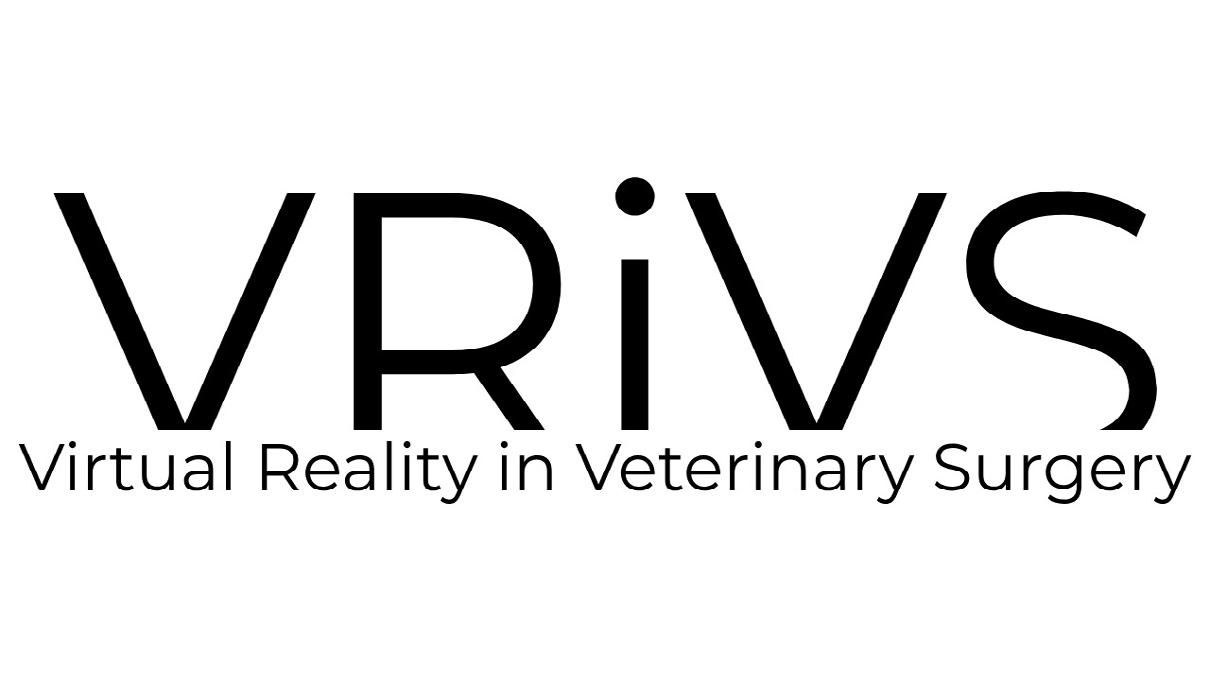
Virtual Reality in Veterinary Surgery (VRiVS) Ltd was founded in 2024 by Professor Jagtar Dhanda (Maxillofacial surgeon, founder of VRiMS) and Dr Chris Trace (Head of Digital Learning at University of Surrey, VetEd Veteran). VRiVS is seeking to follow in VRiMS’ footsteps and bring extended reality methods into veterinary training worldwide. Jag and Chris will be attending and running a workshop on Thursday; the techniques they will showcase include interactive and synchronised 360 VR with virtual studio overlay, as well as 6DoF VR, so do drop by to say “Hi!” and help us shape the future of veterinary surgical training!







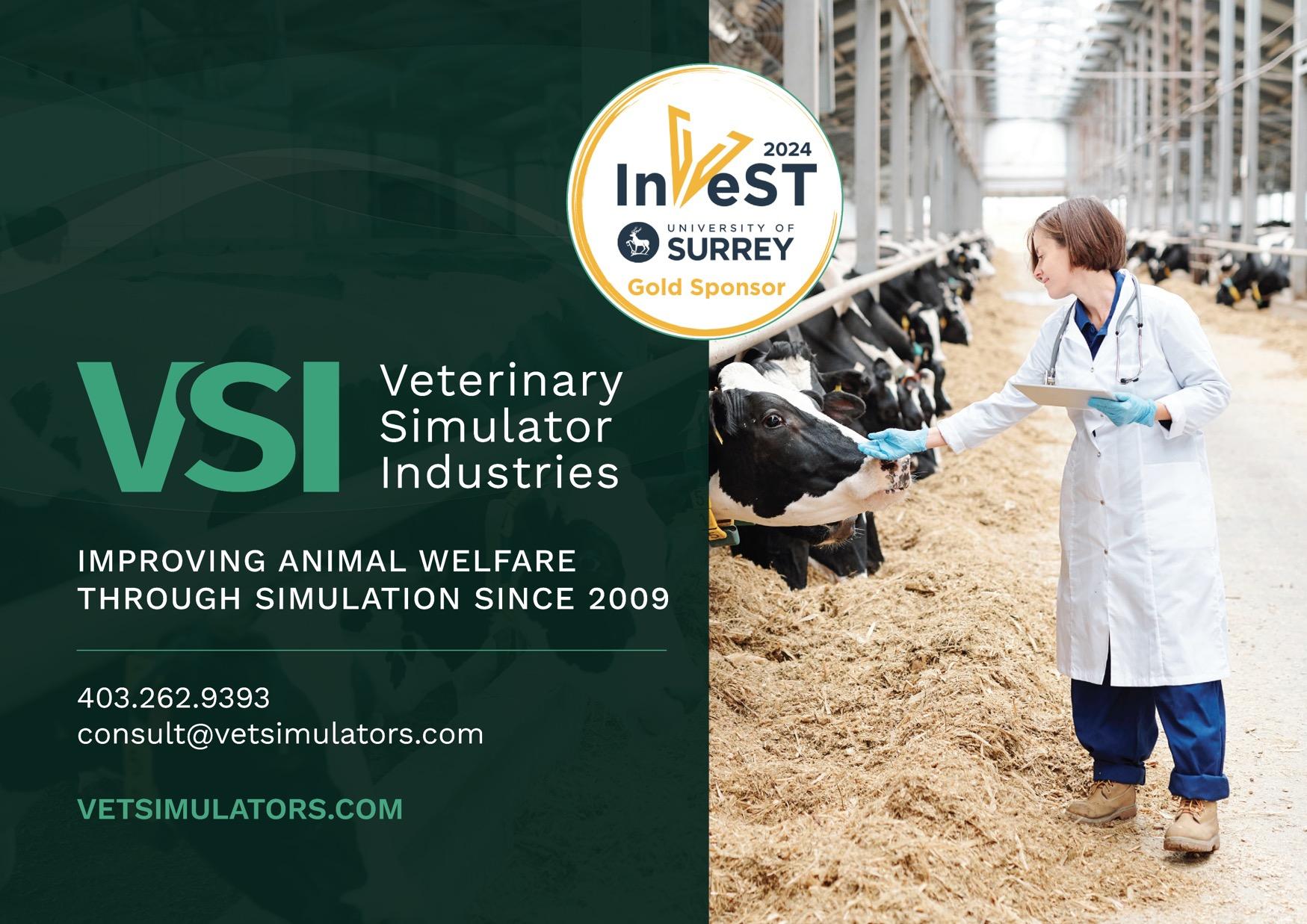
world leaders in delivering OSCE, Oral, Knowledge and WBA assessments
assess
Everything you need to manage and deliver assessments, from content creation and delivery to analysis, reporting and feedback.

advance
Gather evidence of your users’ training & CPD progress, providing them with the insights they need throughout their learning journey.

technology to enable every ambition visit risr.global